school choice
description: arrangements giving parents the facility to choose schools for their children
84 results
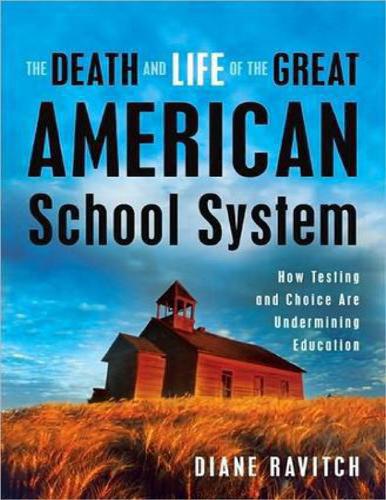
The death and life of the great American school system: how testing and choice are undermining education
by
Diane Ravitch
Published 2 Mar 2010
For most of Reagan’s two terms, the Democratic Party controlled both houses of Congress, and the party was closely allied with the two national teachers’ unions, the National Education Association (NEA) and the American Federation of Teachers (AFT). The unions opposed school choice, which they saw as a threat to public education and a step toward privatization. Congress rebuffed Reagan’s proposals for school choice, as well as his plan to eliminate the Department of Education. However, the concept of school choice found a home among free-market-oriented foundations and think tanks, such as the Heritage Foundation, the Cato Institute, the John M. Olin Foundation, and the Lynde and Harry Bradley Foundation. The foundations and think tanks incubated a generation of scholars and journalists who advocated school choice long after the end of the Reagan administration.
…
The Department of Education was committed to both standards and choice (choice was even higher on the agenda of Republicans than standards, because Republicans generally opposed national standards, which suggested federal meddling). At meetings of top staff in the department, I sat in on many discussions of school choice in which the question was not whether to support choice, but how to do so. The issue of choice had never been important to me, but I found myself trying to incorporate the arguments for choice into my own worldview. I reasoned that standards would be even more necessary in a society that used public dollars to promote school choice. The more varied the schools, the more important it would be to have common standards to judge whether students were learning. I began to sympathize with the argument for letting federal dollars follow poor students to the school of their choice.
…
This approach was the very opposite of Friedman’s goal of maximizing individual freedom through school choice. As the federal government kept up the pressure for desegregation and as resistance to mandatory busing increased, some school districts attempted to encourage voluntary desegregation through choice. They opened magnet schools—schools with specialized offerings in the arts or sciences or other fields—to encourage white students to attend urban schools that would otherwise be heavily nonwhite. But until the election of Ronald Reagan in 1980, the issue of school choice remained far outside the mainstream, mainly because it was viewed by the media and elected officials as a means to permit white students to escape court-ordered racial desegregation.
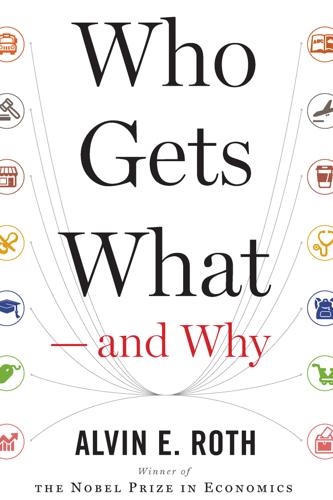
Who Gets What — and Why: The New Economics of Matchmaking and Market Design
by
Alvin E. Roth
Published 1 Jun 2015
Spreading the Word After our initial experience in New York and Boston, other school districts began to call us for help. Indeed, since founding the nonprofit Institute for Innovation in Public School Choice, Neil Dorosin has become the Johnny Appleseed of market design for school choice. With support from Atila, Parag, and me, IIPSC has helped design school choice mechanisms for Denver and New Orleans and has had input into school choice in Washington, D.C. As I write this, we have projects under way in several other cities as well. Economists in Japan and Belgium also have begun to look into designing school choice systems there, and in England it seems to have become a priority for the Conservative Party.
…
Notice that we’ve just repeated the logic that we used in the previous chapter to demonstrate Gale and Shapley’s discovery that the final matching that results from the deferred acceptance algorithm is stable. Details, Details I made some simplifications in my explanation of how the deferred acceptance algorithm was adapted to fit New York school choice. It’s worth mentioning a few of these simplifications, because details matter so much in market design. Just as the medical Match had some special features (including couples looking for two jobs), so, too, does New York school choice. Also, school choice operates under a lot of constraints, and many people have to sign off on any innovations. Sometimes this led to unavoidable complications. Not all of these complications were unavoidable, but just as in kidney exchange, my economist colleagues and I were only advisers, and not all of our advice was adopted.
…
A random lottery number was assigned to each child and used to break ties—for example, when there weren’t enough places for all the walk zone kids, only some could be admitted. For the other half of the seats in a school, only the lottery established priority. This division of the Boston schools into halves implicitly acknowledged a political reality. School choice divides parents into two “parties.” People who live near good schools become the “walk-to-school party,” while those who live elsewhere become the “school choice party.” The priority policy in Boston (where people still recall the “busing wars” fought there a generation ago during desegregation) represented a compromise between the two, and the details of this compromise were adjusted from year to year based on which groups wielded the most influence.
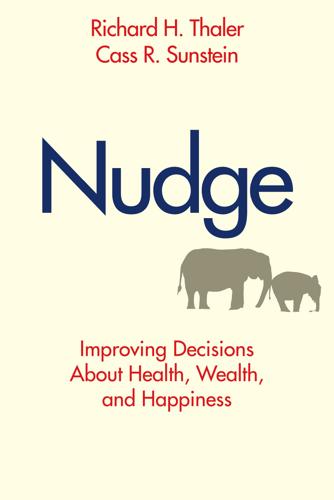
Nudge: Improving Decisions About Health, Wealth, and Happiness
by
Richard H. Thaler
and
Cass R. Sunstein
Published 7 Apr 2008
Haddad, and Bruce Paton. “The Economics of Energy Efficiency: Insights from Voluntary Participation Programs.” Energy Policy 28 (2000): 477–86. Howell, William. “School Choice in No Child Left Behind.” In Choice and Competition in American Education, ed. Paul E. Peterson, 255–64. Lanham, Md.: Rowman and Littlefield, 2006. Hoxby, Caroline. “School Choice and School Productivity: Could School Choice Be a Tide That Lifts All Boats?” In The Economics of School Choice, ed. Caroline Hoxby, 287–341. Chicago: University of Chicago Press, 2003. Hsee, Christopher K. “Attribute Evaluability and Its Implications for Joint-Separate Evaluation Reversals and Beyond.”
…
Some of the most heated debates in American politics, involving same-sex marriage and related issues, could be made much less hot with a little separation of church and state—and by insisting on freedom both for religious organizations and for people who love each other. 13 IMPROVING SCHOOL CHOICES In 1944 President Franklin Delano Roosevelt included “the right to a good education” in what he called a Second Bill of Rights, designed to promote “security” and suitable for a modern democracy.1 Most Americans seem to believe that children do have a right to a good education; there is a consensus on that point. One reason for that consensus is that educated people are more free. But the consensus breaks down when people explore how, exactly, to achieve that right. School choice remains an intensely polarizing issue in American politics.
…
If schools compete, kids win. And if schools compete, those who are the least advantaged have the most to gain. Wealthy families already have “school choice,” because they can send their children to private schools. If we give parents vouchers to send their children to any school they want, then we will put children from poor families more nearly on a par with their more privileged middle- and upper-class counterparts. Shouldn’t poor children have the same rights that wealthy ones do? Critics of school choice argue that such programs amount, in practice, to an attack on the public school system that has helped make America great.
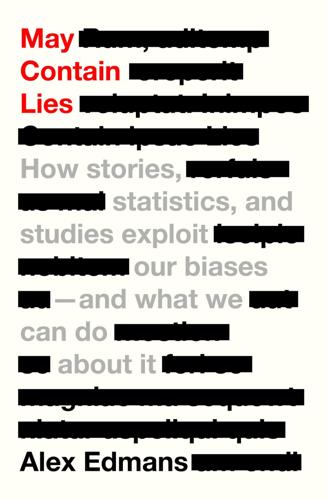
May Contain Lies: How Stories, Statistics, and Studies Exploit Our Biases—And What We Can Do About It
by
Alex Edmans
Published 13 May 2024
Rivers are relevant, as they force a metropolitan area to have more districts and so increase school choice. Second, an instrument must be exogenous – it has no effect on the output except through the input. Rivers are unlikely to affect a child’s performance other than by changing the number of districts and thus school choice. They don’t directly cause kids to be smarter, nor are there any indirect effects through rivers making parents more engaged. In the diagram below, there’s no arrow from rivers to child performance, so rivers are not a common cause. Any link between school choice and child performance can’t be because rivers cause both.
…
We find that child performance is higher in cities with greater school choice, for example Boston compared to Miami. If we’re a free marketer, we’re tempted to accept this correlation as causation – as evidence that competition causes higher performance. This is when our rational System 2 should kick in and remind us that there are two alternative explanations for any correlation. One is reverse causation. Poor child performance might reduce the number of districts: when districts are doing badly, they merge to cut costs. Another is common causes : if parents care about education, they’ll demand school choice (increasing the number of districts) and tutor their kids at home (improving child performance).
…
A famous paper by economist Caroline Hoxby used rivers as an instrument for school choice to solve our education conundrum.4 In the US, school districts were formed in the eighteenth century, when crossing a river was difficult because there were no cars and few bridges. As a result, districts rarely crossed rivers, so that children wouldn’t need to do so to get to school. Metropolitan areas with several rivers thus had multiple districts; since districts haven’t changed much over time, these areas still have many today. Hoxby decomposed the input – school choice – into two parts: the exogenous part that can be attributed to the instrument (rivers) and the endogenous part that can’t (and instead arises from common causes like parental engagement).†† Then, she linked only the exogenous part to the output: student performance.
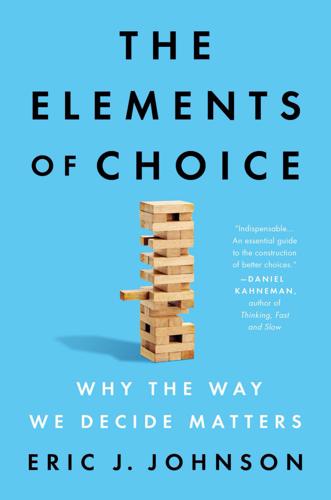
The Elements of Choice: Why the Way We Decide Matters
by
Eric J. Johnson
Published 12 Oct 2021
Peters, “Zoom Adds New Security and Privacy Measures to Prevent Zoombombing”; Garber, “A Company Called Zoom Technologies Is Surging Because People Think It’s Zoom Video Communications (ZOOM, ZM).” 35. “Automatic Voter Registration”; Brater, “Automatic Voter Registration in Oregon a Huge Success.” 6. How Many Options? 1. Robbins, “Lost in the School Choice Maze.” 2. Other examples include the matching of residents to hospitals and kidneys to potential donors. 3. Nathanson, Corcoran, and Baker-Smith, “High School Choice in New York City: A Report on the School Choices and Placements of Low-Achieving Students.” 4. “The Tyranny of Choice: You Choose.” 5. Scheibehenne, Todd, and Greifeneder, “What Moderates the Too-Much-Choice Effect?” 6.
…
Lawman, and Christina A. Roberto. “Online Randomized Controlled Trials of Restaurant Sodium Warning Labels.” American Journal of Preventive Medicine 57, no. 6 (December 1, 2019): e181–93. doi:10.1016/j.amepre.2019.06.024. Nathanson, Lori, Sean P. Corcoran, and Christine Baker-Smith. “High School Choice in New York City: A Report on the School Choices and Placements of Low-Achieving Students.” Research Alliance for New York City Schools, April 25, 2013. National Transportation Safety Board. “Loss of Thrust in Both Engines After Encountering a Flock of Birds and Subsequent Ditching on the Hudson River, US Airways Flight 1549 Airbus A320–214, N106US Weehawken, New Jersey, January 15, 2009” (2010): 1–213.
…
Many cities in the United States, including Denver, Minneapolis, New Orleans, New York, and Tucson, present students and their parents with options—that is, they ask families to choose their preferred schools. Roughly half of the fifty largest districts across the country offer students some degree of choice of high school. While school choice is controversial, I am not going to talk about the politics of the question. Instead, let’s concentrate on another very important aspect: how parents and kids choose schools. Parents know more about their children’s skills, preferences, and values than the school system does. They know whether their child likes small classes, enjoys learning languages, wants to be a medical technician, or plans to attend a world-class college.
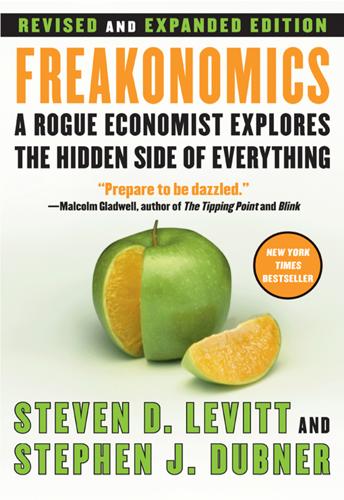
Freakonomics: A Rogue Economist Explores the Hidden Side of Everything
by
Steven D. Levitt
and
Stephen J. Dubner
Published 11 Apr 2005
And since most parents would agree that education lies at the core of a child’s formation, it would make sense to begin by examining a telling set of school data. These data concern school choice, an issue that most people feel strongly about in one direction or another. True believers of school choice argue that their tax dollars buy them the right to send their children to the best school possible. Critics worry that school choice will leave behind the worst students in the worst schools. Still, just about every parent seems to believe that her child will thrive if only he can attend the right school, the one with an appropriate blend of academics, extracurriculars, friendliness, and safety. School choice came early to the Chicago Public School system.
…
This was hardly the goal in the mind of the Chicago school officials who conceived the lottery. But when viewed in this way, the lottery offers a wonderful means of measuring just how much school choice—or, really, a better school—truly matters. So what do the data reveal? The answer will not be heartening to obsessive parents: in this case, school choice barely mattered at all. It is true that the Chicago students who entered the school-choice lottery were more likely to graduate than the students who didn’t—which seems to suggest that school choice does make a difference. But that’s an illusion. The proof is in this comparison: the students who won the lottery and went to a “better” school did no better than equivalent students who lost the lottery and were left behind.
…
.” / 141 Pinker called Harris’s views “mind-boggling”: Steven Pinker, “Sibling Rivalry: Why the Nature/Nurture Debate Won’t Go Away,” Boston Globe, October 13, 2002, adapted from Steven Pinker, The Blank Slate: The Modern Denial of Human Nature (New York: Viking, 2002). SCHOOL CHOICE IN CHICAGO: This material is drawn from Julie Berry Cullen, Brian Jacob, and Steven D. Levitt, “The Impact of School Choice on Student Outcomes: An Analysis of the Chicago Public Schools,” Journal of Public Economics, forthcoming; and Julie Berry Cullen, Brian Jacob, and Steven D. Levitt, “The Effect of School Choice on Student Outcomes: Evidence from Randomized Lotteries,” National Bureau of Economic Research working paper, 2003. STUDENTS WHO ARRIVE AT HIGH SCHOOL NOT PREPARED TO DO HIGH SCHOOL WORK: See Tamar Lewin, “More Students Passing Regents, but Achievement Gap Persists,” New York Times, March 18, 2004.
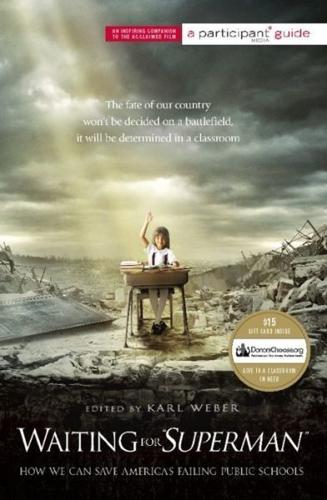
Waiting for Superman: How We Can Save America's Failing Public Schools
by
Participant Media
and
Karl Weber
Published 14 Jun 2010
Second, we need to decentralize decision making so that local schools—where the demands are known, where the people are known, and where programs can be designed to increase achievement—have the freedom to perform. We cannot try to specify from the state or national capital how to learn. Third, we have to offer school choice to all parents. Currently, well-off parents exercise school choice through their selection of residential location, but poor parents have many fewer options. Choice options such as those presented by charter schools help all families by putting pressure on schools to improve. Some argue that it is just too hard to make big changes in our schools.
…
See also Test scores Reassignment centers, teacher Resnick, Lauren Resource policies(table) Resources Responsibility Revelle, Roger Rhee, Michelle biographical information Rimer, Ned Roberts, Kimberly Rocketship Education (San Jose, California) Rose, Joel Ross, Frank “Rubber rooms,” Safe learning environment Schaeffler, Susan Scholastic Inc. School choice School of One (New York’s Chinatown) Schools characteristics of successful and lotteries and school choice suburban vs. urban See also Charter schools; individual schools School segregation School services Schwarz, Eric Science proficiency Science scores. See also Test scores Scientists, as citizen teachers SEED Charter School and lotteries Segregation Self-confidence Self-interest Seniority September 11th Victim Compensation Fund Services, school Shaw-Garnet-Patterson Middle School (Washington, D.C.)
…
Nonetheless, preparing local officials for these tasks is where we should be headed. Neither should we assume that every policy that emphasizes student outcomes and provides performance incentives is necessarily effective. The design of incentives is complicated, and many incentive structures lead to unintended and undesirable consequences. For example, if a move to broaden school choice heightens racial or economic segregation in the schools, most people would consider this an undesirable policy. We need to develop more experience with incentives and evaluate these experiences critically. With incentive systems, the details generally prove to be crucial. The ultimate goal of the incentive systems we design must be to attract, encourage, and reward high-performing teachers while pushing low-performing teachers toward either improving their efforts (if they are capable of doing so) or leaving the profession altogether.
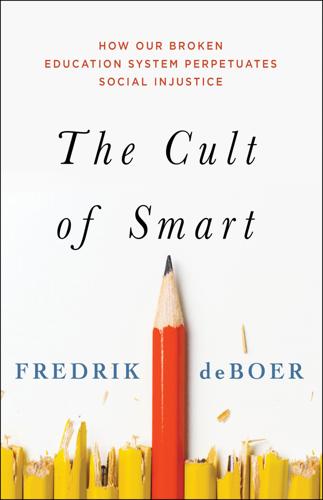
The Cult of Smart: How Our Broken Education System Perpetuates Social Injustice
by
Fredrik Deboer
Published 3 Aug 2020
My most common complaint about education journalism is not so much that I disagree with a particular piece’s conclusions (though I usually do), but rather that most of the writing in this sphere does not present a coherent definition of our goals and values. Consider two brief passages from a New York Times piece on the disappointments of school choice in New York City: school choice has not delivered on a central promise: to give every student a real chance to attend a good school. Fourteen years into the system, black and Hispanic students are just as isolated in segregated high schools as they are in elementary schools—a situation that school choice was supposed to ease. and Sean P. Corcoran, an associate professor of economics and education policy at New York University, has researched the choice process and how students match.
…
As I’ve said in the past, broad categorizations of good and bad schools reverse cause and effect—the worst-performing students don’t perform poorly because they are excluded from the best schools, but rather the best schools are considered so because they systematically exclude the worst-performing students. But let’s set that aside for a moment. These two passages demonstrate the muddled ideas at the heart of our educational debates. What exactly would success in school choice look like? In the first passage it means that every child gets to attend a “good” school and that racial segregation by school ends; in the second, it’s that schools and children are matched by ability. Typically, the kind of rigid tracking suggested by Dr. Corcoran is anathema to school reformers, who see tracking—that is, the sorting of students into ability bands for placement into different levels of class difficulty and potentially different curricula—as foreclosing on the potential of students in the lower tracks.
…
It may raise our averages overall and improve our position in international competitions, but it wouldn’t help the students at the bottom of the distribution secure scarce seats in elite colleges and the jobs that come with them. I don’t mean to harp on this one quote from one story. It’s simply an indicative example of broader unexamined assumptions about what exactly we want from our school system. That the New York school “choice” system produces inequality among schools should come as no surprise. Inequality among schools is in fact inevitable in any system that involves choice and the injection of an ostensibly free-market ethos. In the free-market reformer mind-set, schools improve because of market pressures; if the schools don’t educate effectively, the thinking goes, parents will pull their children out, and the schools will either be forced to get better or close.
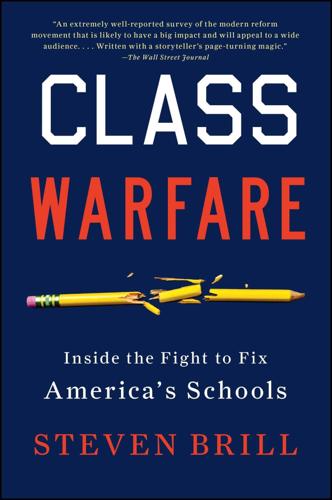
Class Warfare: Inside the Fight to Fix America's Schools
by
Steven Brill
Published 15 Aug 2011
The reason you have these great choices is that so many people have come to Harlem to create so many great schools that Harlem is now literally the school choice capital of the United States. . . . The quality of your child’s school no longer depends on his zip code. . . . But we still have more to do,” Klein added. “We have people who are trying to stop us as we try to keep adding these great schools. So it’s only going to continue to change if every one of you stands up and tells your elected officials and the bureaucrats and all the others who aren’t making the decisions that they need to make, to let school choice continue so that we don’t have to have lotteries. It’ll only continue if you stand up to your elected officials.
…
I met the first tonight: Barack Obama, who is running for the Senate in Illinois. He is strikingly similar to Cory—young (42 vs. Cory’s 35), brilliant, eloquent, visionary and able/willing to cut across political lines. For example, most Democrats are afraid to take on the teachers’ unions and support charter schools and school choice, but Obama (like Cory) champions this issue. By now, Tilson, who was thirty-seven, and two other hedge-fund friends—Boykin Curry, thirty-five, and John Petry, thirty-three—had become an informal triumvirate of young, well-off Democrats interested in education issues. Beginning in 1998, they had all become enthusiastic backers of Cory Booker when Booker had won a Newark City Council race in an upset.
…
Through the rest of 2004, Tilson, Petry, and Curry ruminated over how to get involved politically in education beyond simply supporting one-offs like Booker in Newark or Obama in Illinois. One evening, they went to a speech at the Harvard Club given by John Walton, the son of the Wal-Mart founder. The younger Walton had directed much of his philanthropic support to education reform. Walton’s speech and others like it at events sponsored by a group called the Alliance for School Choice came at the issue from the old Bill Bennett Republican angle. It wasn’t that it was substantively wrong but rather that the tone—more talk about vouchers for private schools than fixing public schools and general attacks on unions—and the Republican pedigree of all the speakers were more likely to repel Democratic politicians than convince them.
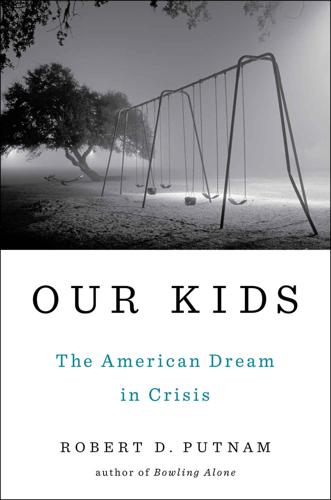
Our Kids: The American Dream in Crisis
by
Robert D. Putnam
Published 10 Mar 2015
This process clusters advantaged kids with other advantaged kids in one set of schools, like Troy High, and poor kids with other poor kids in another set of schools, like Santa Ana High. Admirable though it may be for other reasons, “school choice” has had at most a slight impact on the class gap. It does allow an increasing proportion of students (roughly 15 percent) to attend schools chosen by their parents, rather than schools based on their residence. But especially among lower-income families, the choices parents make are often not well informed and are constrained by transportation and child care problems.26 School choice would not likely have made much difference for the lower-class children we’ve focused on in this book, for example, because they lacked savvy parents to help them make better choices.
…
Haurin, “Parents, Peers, or School Inputs: Which Components of School Outcomes Are Capitalized into House Value?,” Regional Science and Urban Economics 39 (September 2009): 523–29. 26. Lareau and Goyette, eds., Choosing Homes, Choosing Schools. For conflicting views on whether school choice narrows class and racial gaps, see Mark Schneider, Paul Teske, and Melissa Marschall, Choosing Schools: Consumer Choice and the Quality of American Schools (Princeton: Princeton University Press, 2000); Tomeka M. Davis, “School Choice and Segregation: ‘Tracking’ Racial Equity in Magnet Schools,” Education and Urban Society 46 (June 2014): 399–433. 27. Jaap Dronkers and Rolf van der Velden, “Positive but Also Negative Effects of Ethnic Diversity in Schools on Educational Performance?
…
Rising Inequality, Schools, and Children’s Life Chances, eds. Duncan and Murnane, 339–58. James E. Ryan, Five Miles Away, a World Apart: One City, Two Schools, and the Story of Educational Opportunity in Modern America (New York: Oxford University Press, 2010), reports that most children attend their neighborhood school, and even participants in school choice programs usually attend nearby schools. 23. Annette Lareau and Kimberly Goyette, eds., Choosing Homes, Choosing Schools: Residential Segregation and the Search for a Good School (New York: Russell Sage Foundation, 2014). 24. Jonathan Rothwell, “Housing Costs, Zoning, and Access to High-Scoring Schools,” Brookings Institution (April 2012).

Uneasy Street: The Anxieties of Affluence
by
Rachel Sherman
Published 21 Aug 2017
Thus, as Diane Reay and her colleagues have pointed out, exposure to otherness serves both moral and instrumental purposes.17 The idea of instilling particular values in kids goes hand in hand with fostering capacities for dealing with difference. These become a form of cultural capital, as Eliana’s notion of “fluency outside the bubble” suggests.18 School Choice These questions of exposure and advantage came to the forefront in talking about children’s central social environment: school. In New York, as in many other cities, public schools are much more likely than private ones to provide the exposure to difference that many parents said they wanted.
…
CHAPTER SIX: PARENTING PRIVILEGE A modified version of this chapter has been published as Sherman 2017. 1.See Khan 2011; Lareau (2011) uses this word to mean a more positive sense of empowerment. See the introduction and Sherman 2017 on this point. 2.See, e.g., Cooper 2014; Katz 2008, 2012; Nelson 2010. 3.See Cucchiara and Horvat 2014 for a discussion of school choice as identity construction for parents. 4.Nelson 2010, 6. See also Katz 2001, 2008, 2012; Lareau 2002, 2011; Streib 2013. On the pursuit of educational advantages specifically, see Calarco 2011; Johnson 2006; Lareau and Weininger 2008. For the UK context, see, e.g., Devine 2004; Reay 1998, 2005a; Vincent and Ball 2007; Weis et al. 2014.
…
Ethnic and Racial Studies 37 (12): 2209–2225. Cucchiara, Maia. 2013. “‘Are We Doing Damage?’ Choosing an Urban Public School in an Era of Parental Anxiety.” Anthropology and Education Quarterly 44 (1): 75–93. Cucchiara, Maia, and Erin Horvat. 2014. “Choosing Selves: The Salience of Parental Identity in the School Choice Process.” Journal of Education Policy 29 (4): 486–509. Cullen, Jim. 2004. The American Dream: A Short History of an Idea That Shaped a Nation. New York: Oxford University Press. Daloz, Jean-Pascal. 2012. The Sociology of Elite Distinction. New York: Palgrave Macmillan. D’Amico, James V. 2010.
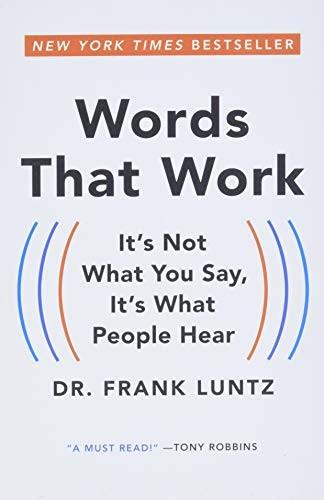
Words That Work: It's Not What You Say, It's What People Hear
by
Dr. Frank Luntz
Published 2 Jan 2007
The public is demanding further education reform to the “Leave No Child Behind” initiatives that were passed into law—but how those reforms are explained determines their level of support. I have been active in the so-called “school choice” effort, and in my research work I have found that calling the financial component a “voucher” rather than the more popular “scholarship” trivializes the powerful opportunity and financial award that children from poor families receive when their parents have the right to choose the school they will attend. In fact, I’d argue that it’s more accurate to call it “parental choice in education” than “school choice” because it really is the parents who are deciding the schooling for their children. Or, considering how such a program equalizes education for rich and poor alike, the most accurate phrase may well be “equal opportunity in education”—and it certainly tests best in the polling my firm has done.
…
From responsibility for employees and shareholders, for customers and the community, a company that practices “corporate responsibility” is seen as a good corporate citizen. NEVER SAY: School choice INSTEAD SAY: Parental choice INSTEAD SAY: Equal opportunity in education NEVER SAY: Vouchers INSTEAD SAY: Opportunity scholarships Thanks to an effective advertising campaign by national and state teacher unions, Americans remain at best evenly split over whether they support “school choice.” But they are heavily in favor of “giving parents the right to choose the schools that are right for their children,” and there is almost universal support for “equal opportunity in education.”
…
But they are heavily in favor of “giving parents the right to choose the schools that are right for their children,” and there is almost universal support for “equal opportunity in education.” “Vouchers,” seen as depriving public schools of necessary dollars, have even less support than the principle of school choice. However, “opportunity scholarships” do have widespread backing, as they are perceived to be a reward for good students to get a good education. Here again, the words you use determine the support you will receive. NEVER SAY: Health care choice INSTEAD SAY: The right to choose This is an important nuance often lost on politicians. Almost all Americans want “the right to choose the health care plan, hospital, doctor, and prescription drug plan that is best for them,” but far fewer Americans actually want to make that choice.

Markets, State, and People: Economics for Public Policy
by
Diane Coyle
Published 14 Jan 2020
Tim Harford (2014), “Underperforming on Performance,” http://timharford.com/2014/07/underperforming-on-performance/. Steven Kelman (1987), “Public Choice and Public Spirit,” Public Affairs (Spring), http://www.nationalaffairs.com/public_interest/detail/public-choice-and-public-spirit. OECD (2017), “School Choice and School Vouchers: An OECD Perspective,” http://www.oecd.org/edu/School-choice-and-school-vouchers-an-OECD-perspective.pdf. Alternative Approaches Kaushik Basu (2017), The Republic of Beliefs: A New Approach to Law and Economics, Princeton University Press. David Colander and Roland Kupers (2014), Complexity and the Art of Public Policy: Solving Society’s Problems from the Bottom Up, Princeton University Press.
…
The algorithm produces a stable, one-to-one matching: proposers are rejected by their higher-ranking choices so have reached the best partner they can attain; recipients are only tentatively matched until they reach the best offer they can attain. Roth and other market designers have deployed this algorithm in many real-world contexts, such as medical internship applications and school choices. These are not markets in the sense that no prices are set or money paid. But they match demand and supply in the most efficient way possible. The theories also look at how to make sure the algorithms incentivize participants always to reveal their true preferences rather than to choose strategically.
…
Opponents argue that private schools select the most able and the better-off pupils, and that the schemes take funding away from the public sector, which is left with the most disadvantaged pupils. School vouchers were first proposed by the prominent free market advocate Milton Friedman in 1955, who founded what ultimately became EdChoice, which campaigns to extend school choice programs, such as voucher schemes; fifteen US states now offer voucher schemes. The idea remains associated with conservative political views. Figure 7.4. Sources of school funding, OECD countries, 2009. Countries are ranked in descending order of the percentage of private school funding from government sources.
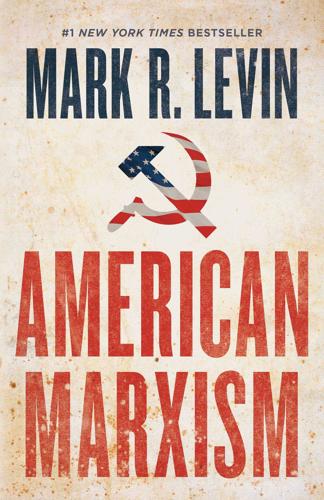
American Marxism
by
Mark R. Levin
Published 12 Jul 2021
Moreover, the early progressives understood that they must institutionalize their educational activism by, among other things, controlling the administration of education and the classroom through a tenured and unionized legion of teachers, where like-minded instructors armed with ideologically driven (“social activism”) curricula populate all levels of educational institutions, often choose their successors, and are protected from scrutiny or competition. For these reasons and more, they adamantly oppose standardized testing, merit-based teacher evaluations, school choice, and the like. After all, their purpose is to uproot traditional, pre-progressive oriented educational approaches and clear the way for progressive/Marxist-oriented, ideologically based doctrinal approaches instead. It also bears reminding that the early progressives, like their modern progeny, are the intellectual offspring of Rousseau, Hegel, and Marx.
…
Even if correct, this view is both paternalistic and a pathetically poor effort to regain a position of dominance.”30 But there were and are prominent critics of CRT who were active in the early civil rights movement, including the late Rev. Martin Luther King Jr.’s chief of staff, confidant, and friend, Dr. Wyatt Tee Walker. Walker was a legend in the civil rights movement in his own right. His friend and frequent collaborator in the school choice movement, Steve Klinsky, writes that Walker was King’s “ ‘field general’ in the organized resistance against notorious Birmingham safety commissioner ‘Bull’ Connor. Walker compiled and named King’s ‘The Letter from Birmingham Jail.’ He was with King for the march on Washington that produced the ‘I have a dream’ speech, and in Oslo for the Nobel Peace Prize.”31 Walker emphatically rejected CRT.
…
Although teachers’ unions in certain states have the power to strike, the power of the purse is an important and underutilized tool in the struggle for control over public schools. 7. Community committees should demand competition in education. The issue is what is in the best interest of individual students and the public, not entrenched school board members, teachers’ unions, and the educational bureaucracy. This triumvirate always oppose school choice, including charter schools, vouchers for private and parochial schools, etc., because they oppose competition. Parents and other taxpayers should insist that tax dollars follow the student, especially now given the radicalization and politicization of our public school systems, and the abuse of power demonstrated by many teachers’ unions during the coronavirus pandemic. 8.
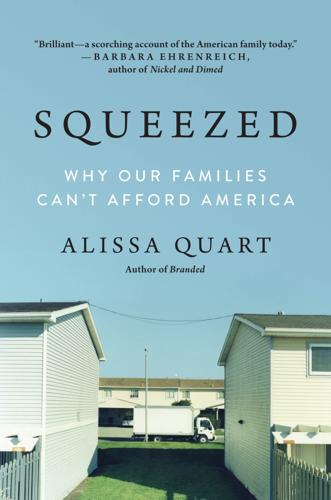
Squeezed: Why Our Families Can't Afford America
by
Alissa Quart
Published 25 Jun 2018
Suárez-Orozco thinks that the first step in incorporating immigrant children into public schools is to make the school choice process easier to understand. It is common for immigrants to arrive in the United States “thinking American schools are the best in the world, to come with basic trust, and assumptions about educational authority that are not fully true,” she said when we spoke. Schools need “to create more transparent educational pathways,” she added, “so you don’t have to be a chess master to get your kid through school.” It’s not only immigrants, however, who must navigate the school choice process. The experience of parents and students like Blanca and Guido should match that of the privileged families who wend their ways through the public school system, knowing how to lobby for access to, say, the progressive public school with the farm on the roof, or the “best” (and wealthiest) public schools whose zone borders encompass only the most expensive addresses.
…
This brings us back once more to cultural capital—the knowledge necessary to figure out unwieldy social systems using one’s networks. THE MOST PRIVILEGED PARENTS CAN HIRE TUTORS AND SEND THEIR children to expensive prep courses. Others hire coaches who have built careers out of helping parents navigate public school choice. I once saw a mother buttonhole a principal and insist that he rank all the public schools in the mother’s catchment area in descending order. As she took up the man’s time and ignored the line of other parents waiting to speak to him, a phrase popped into my mind, a variation on the “will to power” of philosophy: the “will to education.”
…
You can’t help that the public schools in your district are failing, that you can’t find common ground with your neighbors to create shared, reasonably priced day care, that you wound up seeking scholarships at a private school and left the commonweal entirely. I’d stab my iced coffee with a straw, standing in the urban sunshine as I offered these nostrums. My sleep was also full of advice, seemingly to myself from my troubled unconscious: I had nightmares about housing shortages and school choice. Initially, I feared for my family, as for a while neither my husband nor I had any work except freelance writing. While things turned out just fine for us in the end, I knew statistically as well as firsthand that workingwomen had it worse. Always worse. The mothers I knew and the ones I gave grants to through the nonprofit tended to make less than the males around them.

Don't Burn This Book: Thinking for Yourself in an Age of Unreason
by
Dave Rubin
Published 27 Apr 2020
Thomas Sowell described this phenomenon by saying, “The black family, which had survived centuries of slavery and discrimination, began rapidly disintegrating in the liberal welfare state that subsidized unwed pregnancy and changed welfare from an emergency rescue to a way of life.” Today, Democrats oppose school choice, a decision that can trap (mostly black) children in failing schools, while politically correct policing often leaves black neighborhoods at the mercy of violent crime. And let’s not forget, candidates Hillary Clinton and Barack Obama both opposed gay marriage during their first runs for the White House.
…
ABC, 148–49, 149–50 abortion, 45–49 compromise between individual rights and government role and, 49 genesis of life and, 46 left’s fetishizing of, 46 public rights versus governmental role, 48–49 survival rates of premature babies, 48 time limits for, 47, 48 Abriss, Erik, 154 Act for America, 133 admitting you don’t know something, 172–75 Adorno, Theodor, 67 Advocate, The, 85 Affleck, Ben, 18–20 Affordable Care Act (ACA), 102 Afghanistan, 70 African Americans intact families and, 91–93 systemic racism and, 89–92, 97–100 welfare state and, 92 Alain de Lille, 202 alcohol, 33–34 algorithmic manipulation of news intake, 163 Ali, Ayaan Hirsi, 6–7, 133–35 Amazon, 142 American Civil Liberties Union, 50 American Conservative Coalition, 110 American dream, as non-discriminatory, 146–47 American Revolution, 131 anti-Semitism, 108 Argentina, 101 Asian Americans, 143 Aslan, Reza, 155 assault rifles, 106 automation, 66 avoidance behavior, 129 “Baby, It’s Cold Outside” (song), 198 Backer, Benji, 110 balanced life, tips for living, 204–6 Banaji, Mahzarin, 98 Baquet, Dean, 158 Barre, Siad, 133 Bercovici, Jeff, 161 Berger, Joseph, 79–80 Bergman, Ben, 161 Berlatsky, Noah, 154 Birth of a Nation, The (film), 112 Black Hebrew Israelites, 153, 154 blatant falsehoods, 163 Block, Hyman, 137 Boghossian, Peter, 87 Booker, Cory, 155–56 books, 164 Boothe, John Wilkes, 112 borders, 40–41 Boston Tea Party, 131 Bouyeri, Mohammed, 134 Brampton, Sally, 203 Brown, Danielle, 26 Bunch, Sonny, 199 Bureau of Labor Statistics, 104 Bush, George W., 70, 131–32 Buttigieg, Pete, 159 BuzzFeed, 9, 21–22, 60, 149 Cain, Caleb, 159, 161, 162 cancel culture, 85 Capehart, Jonathan, 154 capitalism, 141–42 Carlson, Tucker, 122–24 Carnevale, Anthony, 104 “Cashing in on the Rise of the Alt-Right” (Harkinson), 77 catastrophizing, 196–97 CBD (cannabidiol), 33 CBS, 149–50 Chabloz, Alison, 52 character assassination, 16–17 Charlesworth, Tessa, 98 Charlie Hebdo terrorist attack, 20–21 China, 139–40 Churchill, Winston, 203 Civil Rights Act of 1964, 38, 112 Clarkson, Kelly, 198 classical liberalism, 7–8, 28, 29–71 abortion and, 45–49 definition, 30 drugs and, 32–36 economics and, 62–67 foreign policy and, 67–71 free speech and, 50–54 gay marriage and, 37–39 gun control and, 54–58 historical proponents of, 30–31 immigration and, 39–45 individual rights, protection of, 30–31 political language of, 96 stereotypes, neutralization of, 31 tolerance of opposing viewpoints and, 37–39 trans issues and, 59–62 class warfare, 65 Clinton, Hillary, 42, 113 CNN, 10, 21–22, 148–49, 150 Covington story and, 153, 155 Jussie Smollett news story and, 157 Russian Hoax and, 158 college professors, left-wing political brainwashing by, 151 comedy, 187–90 coming out, 3–5 Confederate flag, 112 conservatives political language of, 96 pro-life position of, 49 Cook, Tim, 146 Covington story scandal, 152–55 crack, 34–35 Cruz, Nikolas, 58 culture war, 197–201 Cuomo, Andrew, 156 Daily Beast, The, 149 Daily Show, The (TV show), 62–63, 134–35 Daily Signal, The, 92 Damore, James, 25–26 Daniels, Jessie, 92 Darcy, Oliver, 161 David and Goliath story, 183 debt, government, 66 Declaration of Independence, 31, 144 Deconstructing Harry (film), 4 defensive gun use, lives saved from, 106 DeFranco, Philip, 159, 160–61 DeGeneres, Ellen, 146 Democratic Party, historical background of Civil Rights Act, opposition to, 112 Confederate flag, creation of, 112 Dred Scott ruling and, 111 Ku Klux Klan, formation of, 111–12 Lincoln assassination and, 112 opposition to Thirteenth, Fourteenth and Fifteenth Amendments, 112 school choice, opposition to, 113 War on Poverty and, 112 Democrats = good, Republicans = bad myth, 111–13 Demos, 101 denial, 12 digital journalism, 151 discrimination, 83 Dred Scott ruling, 111 dressing as the person you want to be, 175–79 drugs, 32–36 alcohol, 33–34 government role, 34–36 marijuana, 33 nicotine, 33 Schedule I controlled substances, 34–35 state versus federal issue, 36 taxation and, 35 Dunham, Lena, 127 economic issues, 62–67 government debt, 66 government size and spending, 64 minimum wage, 62, 65–66 tax rates, 64–65 unpaid internships, 62–63 welfare, 66 Economist, The, 80 Ehrlich, Paul, 108 Elder, Larry, 87–95 “An Empirical Analysis of Racial Differences in Police Use of Force” (Fryer), 98 environmental issues, 108–10 extreme weather, 109 food shortage, 108–9 polar bears, 110 Equality Act of 1974, 38 Evans, Chris, 127 Evergreen State College, 22, 23 extreme weather, 109 Facebook, speech guidelines of, 53 fact checking, 8, 87–113 Democrats = good, Republicans = bad myth, 111–13 Elder interview and, 87–95 environmental issues, 108–10 gun control, 105–6 hate crimes, 107–8 learning and growing when faced with new facts, 94–95 nuclear family, importance of, 91–93 political languages, recognizing, 95–97 slow thinking, practicing, 96–97 systemic racism, 89–92, 97–100 wage gap, 103–5 war on women, 100–103 fake news, 9–10, 148–65 algorithmic manipulation of news intake, 163 blatant falsehoods, 163 categories of, 162–63 college professors, left-wing political brainwashing by, 151 Covington story scandal, 152–55 curating list of trusted journalists who operate in good faith, 163–64 distrust of media, 162 gut instinct, following your, 164 historical background, 149–51 institutional, 163 Jussie Smollett news story, 155–57 narrative-driven, 162 political activism and propagandism by journalists, 151–52 proprietors of, examples of, 148–49 Roose’s hit piece blaming Rubin and others for radicalizing youth, 159–62 Russian Hoax and, 157–58 family, 91–93, 112–13 Family Guy (TV show), 189 fatherless children, 91–92 Feinstein, Dianne, 44 Ferguson, Niall, 134 Field of Dreams (film), 177 Fifteenth Amendment, 112 First Amendment free speech rights, 14, 50–54 Fonda, Jane, 103 food shortage, 108–9 foreign policy, 67–71 peace through strength strategy, 67–68 red line in Syria, failure to enforce, 68 troop withdrawals, 70 Ukraine, NATO’s failure to help, 69 Forrest, Nathan Bedford, 111–12 Fourteenth Amendment, 112 Fox News, 150 France, 69, 141 free speech, 50–54, 207 combating conspiracy theories and bad ideas with, 50–51 comedy and, 189 as essential to civilized society, 52 exceptions specified by Supreme Court, 50 hate speech laws and, 52 Kaepernick’s kneeling for national anthem and, 53–54 progressive policing of, 52–53 free thinking, 7–8, 28, 29–71.
…
See leftism/progressivism ProPublica, 99 racism, 18–19, 83–84 against Asian Americans, 143 hate crimes, statistics on, 107–8 systemic (See systemic racism) against white men, 144–45 Raskin, Aza, 200 Reagan, Ronald, 67 Real Time with Bill Maher (TV show), 17–20 redemption narratives, 183 red line in Syria, failure to enforce, 68 Reilly, Wilfred, 107 religious hate crimes, 108 religious stories, need for, 180–84 Republicans = bad, Democrats = good myth, 111–13 reverse psychology, 67 “Reverse Racism Effect, The” (James, James & Vila), 98–99 Review of Income and Wealth, The, 103 Ridley, Matt, 110 Right Side of History, The (Shapiro), 168, 183–84 Rihanna, 146 Roberts, Robin, 156 Rock, Chris, 189 Rogan, Joe, 159 Roose, Kevin, 159–61 Rubin, Artie, 137 Rubin, Ira, 137 Rubin, Isaac, 136–37 Rubin, Jennie, 136–37 Rubin, Miriam, 137 Rubin Report, The, 6–7, 26, 76, 77, 78, 87, 94, 114, 122 Ruffalo, Mark, 127 Russian Hoax, 157–58 Saad, Gad, 87, 139 Salem Witch trials of 1692, 198 Salon, 149 Salzmann, Karl, 199–200 Sanders, Bernie, 69, 156 Sandmann, Nick, 154, 155 Saturday Night Live (TV show), 198 Schedule I controlled substances, 34–35 Sheindlin, Judith (Judge Judy), 146 school choice, 113 Schumer, Amy, 127 Schumer, Chuck, 43–44 Second Amendment, 54–55 second-guessing yourself, 8–9 Selective Service registration, 102 sexism, 83, 84, 144–45 shaming, 8 Shapiro, Ben, 6–7, 39, 78–79, 160–61, 167–68, 183–84 Shepherd, Lindsay, 24–25 Shermer, Michael, 50, 51 Shoot the Damn Dog (Brampton), 203 Shout Your Abortion, 46 silencing of dissent, 22–24 Simpsons, The (TV show), 189 Sinatra, Frank, 125 Skokie, Illinois neo-Nazi march, 1972, 50 slow thinking, 96–97 Smith, Adam, 30–31 Smollett, Jussie, 107, 155–57 socialism, 14 social technology, 200–203 Somalia, 133 “Some Inconvenient Gun Facts for Liberals” (Kristof), 106 Sommers, Christina Hoff, 6–7, 81 Southern Poverty Law Center, 132, 134 Sowell, Thomas, 6–7, 63–64, 65, 95, 112–13 Spiegel, Der, 74–75 Sri Lanka, 101 Starr, Sonja, 102 Stelter, Brian, 157 Stephanopoulos, George, 43 stereotypes, classical liberalism and neutralization of, 31 Stewart, Jon, 134–35 Submission (film), 134 suicides, gun-related, 106 Sweden, 140 Switzerland, 140–41 Syria, chemical assault by, 68 systemic racism, 89–92, 97–100 black shootings of police, statistics on, 99 decline in racial bias, studies indicating, 97–98 diversity in Congress and, 100 Elder interview and, 89–92 homicide rates, 100 police shootings of blacks versus whites, statistics on, 98–99 poverty rates, 99–100 taking rights for granted, avoiding, 131–35 talkpoverty.org, 92 taxation amounts paid, men versus women, 102–3 cigarettes and, 35 tax rates, 64–65 terrorism Charlie Hebdo attack, 20–21 9/11 terrorist attacks, 4–5 Thailand, 140 Thiel, Peter, 6–7, 85 Thinking Fast and Slow (Kahneman), 96–97 Thirteenth Amendment, 112 “This Is America” (song), 146 Three Languages of Politics, The (Kling), 95–96 Thunberg, Greta, 197 Today Show, The, 155 tolerance of opposing viewpoints, 37–39 Top Five Regrets of the Dying, The (Ware), 195–96 trans issues, 59–62 as decision for adults and not children, 59–61 detransition rates, 61 gender dysphoria, children may outgrow, 61 language use and, 61–62 troop withdrawals, 70 Truman Show, The (film), 149 Trump, Donald, 45, 53, 69, 130 Tupy, Marian I., 109 Turner, Ted, 150 12 Rules for Life: An Antidote to Chaos (Peterson), 81–82 Twitter speech guidelines of, 53 trolling on, by women, 101–2 Uighurs, 139 Ukraine, 69 United Kingdom, 69, 101 U.S.

Broke: How to Survive the Middle Class Crisis
by
David Boyle
Published 15 Jan 2014
[24] Quoted in Val Gillies (2005), ‘Raising the meritocracy: parenting and the individualisation of social class’, Sociology, vol. 35, no. 5. [25] Edge et al. (1996), ‘Secondary school choice and involvement in education’, paper to the American Education Research Association annual meeting, New York, April 1996. [26] Fiona Millar and Gemma Wood, A New Conversation with Parents: How can schools inform and listen in a digital age? (London, Family Lives, 2011). [27] Katya Williams et al., ‘He was a bit of a delicate thing: white middle class boys, gender, school choice and parental anxiety’, Gender and Education, vol. 20, no. 4, July 2008. [28] Lord Chatfield, The Navy and Defence (London, William Heinemann, 1942), 232
…
The key message seems to be: for goodness sake, give yourself a break and spend a bit of time doing nothing at all — the traditional luxury of childhood in all ages. Perhaps the middle-class worriers should not need to panic quite as much as they do, but the real question is why they feel they have to. School choice and the other education reforms of the late 1980s were supposed to hand power to parents. Why should they feel that they have so much less power than they did? What went wrong? Go to Tunbridge Wells in Kent if you seek the heart of the Panic Belt. Kent is complicated enough because there are fifteen different types of schools, from academies to grammar schools, and now free schools as well.
…
B., 37 property, investing in, 57, 168–71 public sector salaries, 268–9, 291 Public Service Agreement (PSA) targets, 264 public services, centralization of, 263–7 pubs, closure of, 252 Q ‘quangocracy’, 291 quant funds, 129 Quattrone, Frank, 114–15 Quilter Goodison, 134, 147 R Radley College, 59 railways, coming of, 35, 282 Raphael, Adam, 33 Rawnsley, Andrew, 225 Ray, Paul, 49 Raynsford, Nick, 265 Read, Peter, 217–19 remortgaging, 9–10 rents, 21, 68–9, 306 restrictive covenants, 302 retirement age, 180, 203, 302 Reynolds, Christina, 10–11 RIBA, 77–8 Richardson, Gordon, 62, 72 Richmond, 287 Riddell, Fred, 225 Ridley, Adam, 58–60, 63 Ritalin, 229 Roddick, Anita, 301 Rogers, Richard, 78 Roman Catholics, 39 Romania, 3, 68 Rothschild, Jacob, 146 Rowe & Pitman, 138, 146 Royal Bank of Scotland (RBS), 119, 122, 193 Royal Mail, 194 Royal Navy, 143, 264 Rutlish School, 213–14 S Sainsbury’s, 244, 246, 250 St Francis of Assisi, 59 St Paul’s Cathedral, 289 ‘salariat’, 17 Salomon Brothers, 149, 153 Samuel Montagu, 135, 146 Santander, 118, 122 Saratoga, New York, 253–4 Savage, Mike, 40, 44, 53 Scarborough, 265 Schiff, Andrew, 20 school catchment areas, 212–13 and house prices, 20, 210–11, 221 school fees, 19–20, 204, 212, 239 School for Social Entrepreneurs, 296 school meals, 294–5 school playing fields, 238 schools choice of, 230–4, 288 church schools, 211, 214, 216, 239–40 free schools, 216, 240–1 grammar schools, 36–7, 216–17, 219 grant-maintained schools, 221 investment in, 211–12 and league tables, 224–9, 231–3 237–8, 285, 302 Literacy Hour in, 265 nursery schools, 268–9 rural, 252 secondary moderns, 229, 237 size of, 234–8, 303, 328 special school units, 218 ‘super-selective’, 216 see also education Schwed, Fred, 186 SEAC (Stock Exchange Automated Quotations), 147 Seldon, Anthony, 232 self-employment, 5, 45, 184, 249, 292 self-help, 49 Shaw, George Bernard, 290 Shearlock, Peter, 150 Sheffield, 162 Shepherd, Gillian, 228 Shrewsbury, 252 Sibary, Shona, 9–11, 16 Sieff, Marcus, 243 silver, 278–9 Simmonds, Jane, 271 Sizer, Ted, 237 Skegness, 221 Skidelsky, Lord, 227 skiing, 169 Skinners’ School, 217 Smith, John, 225, 263 social care, 21, 85, 201, 296 software ERP and CRM, 256, 261 report-writing, 231 Somerset Food Links, 296 Sorbonne, 157 Soros, George, 131, 157 South London, 43 Southwark, 225 Spain, 56, 97, 294 Golden Age, 277–81 ‘squeezed middle’ (the term), 22 stamp duty, 149 Standard & Poor’s index, 198 Standard Life, 172 Standing, Guy, 17 Stewart, James, 255 Stiperstones Primary School, 252 Stock Market Crash (1987), 61 stockbrokers, 134, 136–40, 145–8, 150, 162, 247 Stockton, Earl of (Harold Macmillan), 288 Stockwell, Christopher, 27–34, 50 Stott, Martin, 44 student loans, 19, 300 subprime mortgage crisis, 140, 155 suicides, 32 Sunday Telegraph, 36, 60 Sunday Times, 33, 150 Surbiton, 73–4 Sure Start centres, 76 sustainable living, 78–9 Sutton Coldfield, 180 Swiss Cottage, 287 Switzerland, 97, 116, 180, 183 T Tasker, Mary, 234–5, 237 Tatler, 284 tax avoidance, 300 tax credits, 5, 164, 270–1 Taylor, Frederick Winslow, 248, 253–7, 261–3 Tea Party, 273 teaching unions, 224, 227–8 Tebbit, Norman, 149, 181 Tennant, Julian, 34 Tesco, 47, 243, 246, 250–1, 300 Thames Water, 202 Thatcher, Margaret, 1, 3, 36, 67, 70, 99, 109, 176–7, 221–2, 290 and City deregulation, 137–8 and financial reforms, 57–9, 63–4, 72–3 and pension reforms, 180, 183, 190 theatres, 126 Thornton, Clive, 71 ‘Tiger Parents’, 215 time banks, 299 Time Warner, 133 Times, The, 65, 67, 135, 147, 177, 226 Times Educational Supplement, 237, 269 Tokyo, 75, 78, 149 Tough, Paul, 234 Toulouse University, 127, 141 Tower Hamlets, 61 trade unions, 160, 255 transport costs, 18 Travelex, 126 trickle-down economics, 124, 157, 161, 286, 289–91 Trollope, Joanna, 79, 245 Truro, 18, 102 Tufnell Park, 80–1 Tunbridge Wells, 216–17 Turner, Adair, 152, 202 tutoring, 219 Tyco, 117 U UKIP, 273 unemployment, 271–2 Unilever, 194 United States of America and auditing culture, 261 banking, 92, 95–7 education, 215–16, 236, 238 housing developments, 85 inequalities of wealth, 23–4 influence of financial sector, 152 job creation, 249 middle classes, 22–3, 272, 282, 286 New Deal, 153 small-town life, 122–3 subprime lending, 75 universities, 212, 215, 242, 248–9 university fees, 18–19, 270 UnLtd, 296 utility bills, rising, 10–11 see also fuel bills V Valladolid, 277, 280–1 Van Reenen, John, 248 Vickers da Costa, 146 Vinson, Nigel, 179 voluntary organizations, 253, 260 W Waitrose, 242–4, 302, 306 Wakeham, John, 181 Walker, David, 137 Wall Street, deregulation of, 135 Wall Street Crash, 186 Warburg’s, 146 Wass, Sir Douglas, 62 Watt, James, 152 Wellington College, 232, 239 Wells, H.
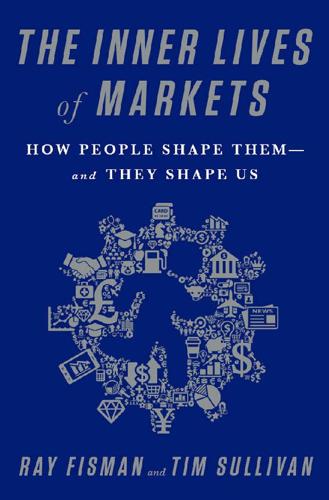
The Inner Lives of Markets: How People Shape Them—And They Shape Us
by
Tim Sullivan
Published 6 Jun 2016
Now, Jonas Vlachos is hardly an apologist for the glories of free enterprise and markets. He’s from Sweden, for one thing, and Scandinavians are known worldwide for their love of big taxes and big government. More personally, Vlachos has been a vocal critic of his country’s market-like approach to education, which is based in part on the school choice vision laid out by Milton Friedman, an icon of laissez-faire ideology. Vlachos’s own kids go to good old-fashioned government-run schools rather than the privately owned voucher ones that exist alongside them. Vlachos had argued that markets were, in many ways, ill suited to serving the educational needs of Swedish students.
…
D., 22 Liu, Qihong, 128–129 Lyft car service, 173 MAD (doctrine of nuclear deterrence by mutually assured destruction), 26 mail-in-bids, for auctions, 83–84 “The Market for Lemons” (Akerlof), 44–51, 64 market frictions, 169–174 market fundamentalists, 16–17 market insights, 14–15 market makers, 107–110, 118–121 markets 18th-century book, 90–91 competitive, 35, 124–126, 172–174, 180–181 design, 133, 137–142 dysfunction of, 36, 75–77, 143 economics of platform, 107–112 equilibrium, 33 fixed-price versus auctions, 96–97 food bank system, 154–160 image problem of, 152–153 labor, 48, 64–66 lemon, 44–51, 58–59, 64, 112 multisided, 108–112, 118–124 one-sided, 108–112 in POW camps, 4, 7–13, 175–177 rules for platform, 112–117 school choice in Sweden, 151–152 selfishness in, 177–179 technology and, 169–173 trade with uninformed parties, 166–169 transformation of, 13–17 two-sided, 108–112, 118–124 See also auctions; economics; platforms Marx, Karl, 20, 23 matching problems middle school dance partners, 131–132, 134, 137–140 student to school, 138–139, 141–142, 143–149 mathematics algebraic topology, 44–45 economic theory transformed by, 15, 19–27 game theory, 136 general equilibrium model, 29, 31–34, 36–37, 40, 45, 76 kidney exchange algorithm, 163–165 models, 20, 24–25, 30 in real world economics, 35–37 Samuelson connecting economics and, 28–29 Shapley-Gale algorithm, 137–140 Matsuzaka, Daisuke, 79–81, 87–89 Maxwell, James Clark, 24 McManus, Brian, 73–75 mechanism design, 133, 134 medical residency programs, 140 merchant from Prato, 105–107 middle school dance-matching, 131–132, 134, 137–140 Milgrom, Paul, 70–71, 98, 102–103 mobile market platform, 116 modeling applied theory, 45, 50, 75–76 competition, 35, 166, 172–173 congestion pricing, 86, 94 dysfunction of, 75–77 economic, 15, 24–29 mathematical, 20, 24–25, 30 reality-based economic, 35–37, 45, 49–51, 141 models auction, 82–84 eBay, 43, 46, 48 general equilibrium, 31–34, 36–37, 40, 76 lemons, 44–51, 58–59, 64, 112 Solow, 35 See also platforms; signaling model Moldovanu, Benny, 90–91 money burning costs, 70–71 money-back guarantees, 69–71 Morals & Markets: The Development of Life Insurance in the United States (Zelizer), 153 Morgenstern, Oskar, 25–27 mortality rates, of Japanese vs German POW camps, 10–13 MS-13 gang, 67 multisided markets, 108–112, 118–124 multisided platform, 14 multiunit Vickrey auction, 93 Murphy, Frank, 9 Nasar, Sylvia, 29 Nash, John, 32 National Archives’ World War II Prisoners of War Data File, 11 network externalities, 121–124 New England Program for Kidney Exchange, 164–165 New York Department of Education, 143–144, 145, 149 Nobel Prize in Economics, 34 See also Sveriges Riksbank Prize in Economic Sciences in Memory of Alfred Nobel noncustomers, paying, 123–124 Nordstrom’s return policy, 69–70 no-risk money-back guarantees, 69–71 normal good, 180 no-trade rule, Japanese POW camps, 10–13 nuclear deterrence, 26 Omidyar, Pierre, 39–40 one-sided markets, 108–112 online retail, 41–43, 52–55 optimized efficiency, 85–86, 133 organ sales, 160–161 organizations, sick, 142–143 out-of-town bids, for auctions, 83–84 Pareto, Vilfredo, 20, 21–22 Pareto efficiency, 22 Penny Black stamp, 82–84 Percy P.
…
A., 7–10, 22–23 Ranau Japanese POW camp, 10–11 RAND Corporation, 25, 27, 134–136 reality-based economic modeling, 35–37, 49–51, 141 See also lemon markets theory recessions, 36, 48, 75 Roberts, John, 66, 70–71 Ross, Lee, 177–179 Roth, Al, 140, 141, 163–165 rush, fraternity/sorority, 140 Rutland, VT, 1 Rysman, Marc, 109 Samuelson, Paul, 28–29, 44 Samuelson, William, 55–57 San Fernando Valley gangs, 61–62 San Fers gang, 61–62 Sandakan camp, Borneo, 10–11 Sauget, IL, 168–169 scams internet, 52–55 money-back, 69–70 Scarf, Herbert, 163–164 school choice, in Sweden, 151–152 school to student matching, 138–139, 141–142, 143–149 Schultz, Theodore, 35 Schumpeter, Joseph, 24, 49–50 Scottish auctions, 82 Sears, 115–116 second-bid auction, 81–82 second-price sealed-bid auctions, 87–89 “Selection process starts with choices, ends with luck” (article), 146 self-destructive behaviors, signaling theory and, 67–68 selfish, markets making us, 177–179 seller misrepresentation, 52–55 sellers, knowing more than buyers, 41, 44–55 Seven Minute Abs, 172 Shakin’ Cat Midgets gang, 61 Shapley, Lloyd, 134–136, 137–138, 163–164 Shapley-Gale algorithm, 137–140 Shi, Peng, 148 Shleifer, Andrei, 180–181 shopping malls, as two-sided markets, 122–123 Shoup, Carl, 85 sick organizations, 142–143 signaling model applications of, 66–68 commitment signs, 62–66 competitive signaling, 69–71 integrity, 71–75 Silicon Valley, market friction and, 169–173 Skoll, Jeff, 39–40, 43, 51 Smith, Adam, 21 Snider, James, 42 social efficiency, auctions, 89 social well-being, assessing, 22 Solow, Robert, 35 Solow model, 35 Sönmez, Tayfun, 144 Sony’s Blu-ray format war, 125–126 sorority rush, 140 spectrum auction theory, 102–103 Spence, Michael, 62–66 Stack, Charles, 42–43 Stalag VII-A POW camp market, 5–6, 7–10, 13 stamp collecting, 82–84 Stiglitz, Joseph, 35–36, 76, 182 strategy proofness mechanism, 145 student to school matching, 138–139, 141–142, 143–149 Summers, Larry, 166–167 Super Bowl advertising, 70–71 supply and demand, 96 survival rates, of Japanese vs.
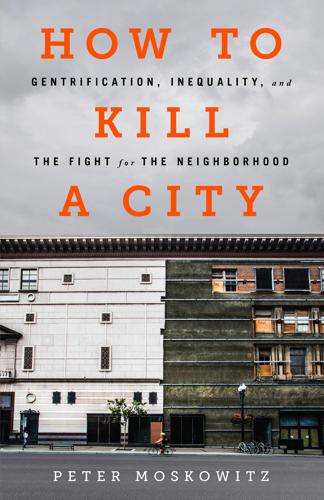
How to Kill a City: The Real Story of Gentrification
by
Peter Moskowitz
Published 7 Mar 2017
A 2013 survey found that while 53 percent of white and Hispanic parents thought the school system was better after Katrina, only 29 percent of black parents felt the same way. And New Orleans’s system of school choice requires parents to apply for schools at the beginning of each school year. The process involves mountains of paperwork and can be confusing. That means it favors parents with extra time and money, and it often means that the students struggling most end up in New Orleans’s worst schools. School choice also translates into longer travel times for parents and their kids, especially since many of the city’s new schools do not have extracurricular activities such as music and arts programs.
…
only about 6 percent of high school seniors in the RSD: Mercedes Schneider, “New Orleans RSD: Far from Meeting Louisiana Four-Year College Admission Requirements,” Huffington Post, February 9, 2015. A 2013 survey found that while 53 percent: “K–12 Public Education through the Public’s Eye: Voters’ Perception of Public Education,” Cowen Institute for Public Education Initiatives, April 2013. And New Orleans’s system of school choice requires parents: Mercedes Schneider, “New Orleans Parental Choice and the Walton-Funded OneApp,” deutsch29 blog, July 5, 2013. “It is about breaking unions”: “The Educational Land Grab.” Those who were hired back were stripped: United Teachers of New Orleans, Louisiana Federation of Teachers, and American Federation of Teachers, “No Experience Necessary: How the New Orleans School Takeover Experiment Devalues Experienced Teachers,” June 2007, 22.
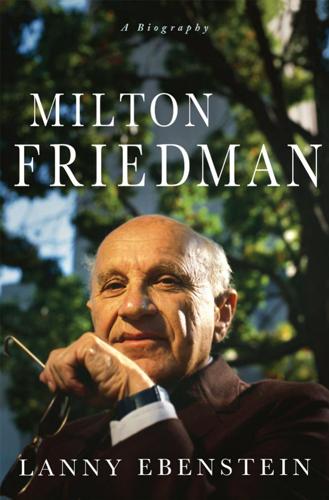
Milton Friedman: A Biography
by
Lanny Ebenstein
Published 23 Jan 2007
Friedman writes passionately of the benefits that he believes students would receive from the voucher system—of the increased opportunities that they would experience through diversity, choice, and competition, and of the improved performance that all schools, including existing public ones, would experience. School vouchers would primarily benefit lower socioeconomic students in large, urban school districts and Friedman thinks that a system of voucher schools would especially benefit African American students. He does not understand why more African American leaders do not embrace school choice through vouchers. He believes that the main opponent of vouchers is the educational establishment, particularly teachers’ unions. His essential formula for improving inner cities and reducing racial tension is to implement vouchers in education, legalize drugs, cut welfare, and eliminate affirmative action.
…
Not only has the school voucher idea been considered outside of this country, but here and abroad the concept of vouchers—providing funding through government but leaving provision of services in competitive, private hands—has proved capable of extension to many other areas, resulting in privatization of government activities. Moreover, within education, notwithstanding the lack of political success that vouchers have had up to this point, the idea of expanding school choice has had many ramifications, from open student transfer policies to, in part, charter schools and home schooling. Although he rejects any comparison with John Dewey, Friedman is not just, with Keynes, one of the two leading economists of the twentieth century; he is arguably, with Dewey, one of the two leading educational reformers.
…
W., 160 Pinochet, Augusto, 189 Piven, Frances Fox, 202 Popper, Karl, 68 Porter, Alan, 83 positive economics, 63–75, 119, 217, 234, 239–40 Powell, Jim, 125–26 price theory, 59, 86–90, 94, 105, 147 prohibition against carrying mail for profit, 172, 173 prohibition, alcohol, 10, 226, 227 quantity theory, 17, 23–24, 100, 107, 110, 114, 131, 133, 136, 161–62, 213 Rand, Ayn, 151 Rathbone, Anne, 103 Reagan, Ronald, 153, 175–78, 185, 198, 205–210, 213, 220, 232, 235 Reder, Melvin, 57–58, 133, 167 Regan, Donald, 209 rent control, 35, 49–50, 136, 171, 172 Ricardo, David, 36 Robbins, Lionel, 85 Rockefeller, John D., 19 Roosevelt recession, 121 Roosevelt, Franklin D., 23, 34, 35, 114, 121, 123 Rosten,Leo,37 Rowley, Charles, 103 Rumsfeld, Donald, 167, 202, 236 Rutgers University, 13–18, 19, 34, 36, 38, 50, 122 Samuelson, Paul, 21, 49, 94–95, 130, 138, 155–57, 160, 169, 180, 216, 241 Savage, Jimmie, 46, 60, 68, 85–86 school choice, 225, 228 school vouchers, 3, 173, 204, 223–29, 234 Schultz, Henry, 22, 24, 25, 32–33, 35, 37, 50, 54 Schultz, Theodore, 60 Schuman Plan, 80 Schumpeter, Joseph, 99, 132 Schwartz, Anna Jacobson, 1, 113, 117–18, 120, 125–26, 173, 186, 232, 238 Schwarzenegger, Arnold, 237 Seldon, Arthur, 211, 232 sequential analysis, 45, 47 Shanker, Albert, 202 Shils, Edward, 21–22 Shoup, Carl, 42 Shultz, George, 73, 167, 181, 186, 197, 207–209, 226, 237 Silk, Leonard, 35 Simon, William, 208–209 Simons, Henry, 22, 24–25, 54, 68, 70, 116, 131, 142, 162, 175 Sjaastaad, Larry, 90, 219 Skole, Robert, 191 Skousen, Mark, 117, 131, 156, 241 Slutzky, Eugen, 115 Smiley, Gene, 125–26 Smith, Adam, 20, 187, 192, 193–94, 200–202, 220, 237 Sobel, Robert, 44 social security, 171–72 socialism, 3, 34, 69, 109, 144 Socrates, 65 Solow, Robert, 57, 80, 157, 159 Soper, C.
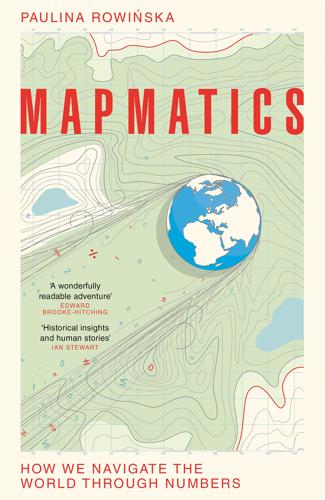
Mapmatics: How We Navigate the World Through Numbers
by
Paulina Rowinska
Published 5 Jun 2024
Unfortunately, it seems that this strategy worsened both the academic results and wellbeing of these children. Researchers have found that the socioeconomic and ethnic composition of the neighbourhood largely impacts school segregation in countries as diverse as Finland, Chile and Australia. Interestingly, this holds even in countries where the home address has little or no impact over the school choice. For example, in Amsterdam, parents can enrol their child at any primary school they wish – with priority in the eight most local schools – and still, they tend to select the closest institution. This perpetuates the division into ‘black’ schools, usually defined as schools where over 60 per cent of pupils belong to ethnic or cultural minorities (regardless of their skin colour), and ‘white’ schools, where minority students make up less than 30 per cent of the student community.
…
Given a choice between two local schools, most parents opt for a school where most pupils ‘look like’ their child – and thus, ‘black’ schools become ‘blacker’, and ‘white’ schools become ‘whiter’. In mixed neighbourhoods, it’s the parental choices and insufficient integration policies rather than the socioeconomic map that explain school segregation. As countries have been increasingly taking the power of school choice from the authorities and giving it to the parents, school segregation levels seem to have worsened. In places where parents don’t directly choose the school, they often still contribute to segregation by influencing attendance zone boundaries. In the US, after Brown vs Board of Education, while some families fled to the suburbs to avoid sending children to newly desegregated schools, other white families remained in the cities and lobbied for attendance zones that would separate their communities from neighbouring Black ones.
…
over 100,000 in all: ‘Index of School Contribution to the Racial Segregation of US School Districts’, Data Catalog, Urban Institute, release date 25 June 2020, accessed 8 July 2020, https://datacatalog.urban.org/dataset/index-school-contribution-racial-segregation-us-school-districts. school segregation within the district: Monarrez, Kisida and Chingos, ‘When Is a School Segregated?’. segregation levels seem to have worsened: Deborah Wilson and Gary Bridge, ‘School Choice and the City: Geographies of Allocation and Segregation’, Urban Studies 56, no. 15 (2019): 3198–215, https://doi.org/10.1177/0042098019843481. south of the original boundary: Chang, ‘School Segregation Didn’t Go Away’. to find the most segregating ones: Tomas Monarrez and Carina Chien, ‘Dividing Lines: Racially Unequal School Boundaries in US Public School Systems’, report, Urban Institute, 1 September 2021, https://www.urban.org/research/publication/dividing-lines-racially-unequal-school-boundaries-us-public-school-systems.

Model Thinker: What You Need to Know to Make Data Work for You
by
Scott E. Page
Published 27 Nov 2018
A budget relocation could be zero-sum in monetary terms but positive or negative sum in terms of human happiness or fulfillment. We should always explore whether a proposed policy change creates a zero sum game. For example, many people argue for school choice—giving parents the ability to choose the school their child will attend—because it increases competition. Market logic suggests that by being forced to compete, schools have incentives to improve quality. However, schools only have an incentive to improve quality if excess capacity exists. Otherwise, school choice can create a zero-sum game among the students. Imagine a city with 10,000 students and 10 schools each with a capacity for 1,000 students.
…
Students are playing a zero-sum game. If new schools open, or if existing schools improve, the game is no longer zero-sum. Everyone can win. Both the market and the zero-sum models provide insights. The market model reveals incentives for quality improvements and for the creation of new schools. The zero-sum model shows that school choice alone means that some students will gain while others lose. The relative weight we should place on each model depends on the context: Does sufficient excess capacity exist in the better schools so that they can absorb the additional students? Do schools have the resources and expertise to improve their quality?
…
Do schools have the resources and expertise to improve their quality? Will entrepreneurs create new schools? Does the transportation system enable students to get to multiple schools in order to create competition? Our takeaway should be that neither of the two models gives us a correct answer, but each produces useful insights. School choice will create competition. It also creates a massive sorting problem with features of a zero-sum game. Whether the positive aspects of competition will outweigh the negative sorting costs depends on the context. We must array our lattice of models on the set of facts to make a good policy choice. The Identification Problem Data on people’s actions often reveals clustered behavior.
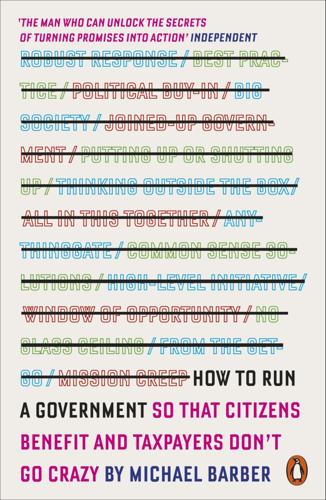
How to Run a Government: So That Citizens Benefit and Taxpayers Don't Go Crazy
by
Michael Barber
Published 12 Mar 2015
In the end, as Gabriel Sahlgren points out in his rigorous analysis, the issue is not an ideological one – there is too much polemic on both sides of this subject – it is a matter of getting the design right. ‘The conclusion,’ he says, ‘is that school choice and competition have the potential significantly to increase school quality, but that design matters.’ He quotes Terry Moe, long-standing US advocate of school choice: ‘choice always operates within a structure … which in turn shapes the kinds of outcomes that choice will ultimately generate … Different structures, different outcomes.’12 So in Punjab, which has the fastest-growing voucher scheme in the world, we have focused it on poor families who are out of school.
…
An Examination of the Role of the Prime Minister’s Delivery Unit in Relation to A&E Waiting Times (2001–2005)’, dissertation for MBA at Warwick Business School Reich, R. (1998), Locked in the Cabinet, New York, Vintage Books Riddell, P. (2005), The Unfulfilled Prime Minister: Tony Blair’s Quest for a Legacy, London, Politico’s Ringen, S. (2013), Nation of Devils: Democratic Leadership and the Problem of Obedience, Yale, Yale University Press Rogers, Everett M. (1983), Diffusion of Innovations, New York, Free Press Russakoff, D. (2014), ‘Schooled’, New Yorker, 19 May Ryan, Alan (2013), On Politics: A History of Political Thought from Herodotus to the Present, London, Penguin Sahlberg, P. (2011), Finnish Lessons, New York, Teachers College Press Sahlgren, G. (2013), Incentivising Excellence: School Choice and Education Quality, London, Centre for Market Reform of Education Scharff, M. (2012), Delivering on a Presidential Agenda: Sierra Leone’s Strategy and Policy Unit, 2010–2011, Innovations for Successful Societies, Woodrow Wilson School of Public and International Affairs and the Mamdouha S.

WTF?: What's the Future and Why It's Up to Us
by
Tim O'Reilly
Published 9 Oct 2017
The fellowship formally launched in January 2011 with a month of training, with the fellows going to their cities in February for onboarding. Over the next few years, we helped local governments create a series of apps that, as first-year fellow and former Apple designer Scott Silverman said, were “simple, beautiful, and easy to use.” A school choice website in Boston; a system for tracking blighted properties in New Orleans; a crowdsourcing app for clearing snow from fire hydrants that, being open source, spread to numerous other cities and was used for other forms of citizen participation, such as clearing storm drains and, in Honolulu, reporting back on whether the tsunami sirens were operational.
…
In Santa Cruz, the fellows built a portal for easier small business permitting; another group of fellows, working in their spare time, built an easy way to model new public transit routes for any city. The speed with which the fellows could build and stand up new applications shocked city staff. The first version of the Boston school choice site was built in about six weeks. City IT staff later marveled that if they had gone through a normal procurement process, the site would have cost them $2 million and taken two years. Allen Square, the CIO of New Orleans, made similar comments about the blight tracking tool. More important, the fellows’ work showed that it is possible to improve the performance of the platform of government.
…
It contained a lot of information, but like many government publications, it could not address any individual situation because each required calculating the distance from a child’s address to the possible schools, so it effectively couldn’t do the job its users needed it to do. The frustration parents felt trying to navigate the school selection process without these tools had led to a yearlong series of articles in the Boston Globe that followed the struggles of families trying to navigate the maze. The school choice app was a win not just for Boston families but for embattled politicians. Building an app using consumer technology talent and user-centered practices (and without going through government procurement channels) was a powerful way to show that our government doesn’t have to be bloated, inefficient, and out of touch.
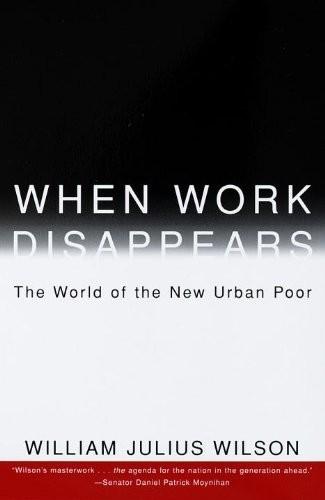
When Work Disappears: The World of the New Urban Poor
by
William Julius Wilson
Published 1 Jan 1996
This would enable parents of all backgrounds, including those in disadvantaged neighborhoods, to compare nearby schools and make appropriate decisions about which ones their children should attend. However, families from disadvantaged neighborhoods would be in a much better position to make and act on such decisions if an effective public school choice program were in place. This would involve the availability not only of vouchers for the selection of public schools but also information about school performance that could be interpreted with ease. Although the empirical data on the effectiveness of existing school choice programs on student achievement is scant, new evidence suggests that increased competition among public schools (as reflected by a larger number of school districts in a metropolitan area) improves average student performance and restrains levels of spending.
…
Harvey: Rotberg and Harvey (1993). 12 Recent research on the nationwide distribution of science and mathematics opportunities: Oakes (1990). 13 Teacher shortages in many central-city and poor rural schools: Darling-Hammond (1990 and 1994). 14 the kind of support that would enable schools in disadvantaged neighborhoods to meet the standards that are set: Darling-Hammond (1994). 15 Since two-thirds of all new jobs will require the use of computers: Hundt (1995). 16 According to the U.S. Bureau of the Census, only 35 percent of black youths: Weaver (1995). 17 quotation from Frank C. Weaver: Weaver (1995), p. 7. Also see Krieg (forthcoming). 18 Although the empirical data on the effectiveness of existing school choice programs: Katz (1995). 19 new evidence suggests: Hoxby (1994) and Katz (1995). 20 The basic assumption underlying the act is that the role of the federal government is to “encourage experimentation”: Marshall (1994), p. 21. 21 Congress appropriated $125 million for Goals 2000 in 1994: Marshall (1994). 22 The learning system in other industrial democracies: Marshall (1994). 23 quotations from Marshall: Marshall (1994), P 7 24 In France, children are supported by three interrelated government programs: Bergmann (1993). 25 quotation from Bergmann: Bergmann (1993), pp. 343–44. 26 quotations from Marshall: Marshall (1994), p. 3. 27 Unlike employers in Germany and Japan: Marshall (1994). 28 quotations from Marshall: Marshall (1994), p. 9. 29 The delay in hiring youths has a number of critical consequences: Marshall (1994). 30 According to a recent report by the U.S.
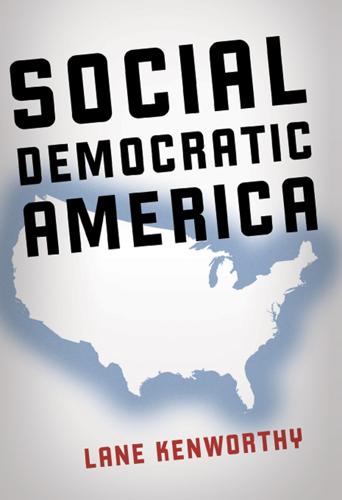
Social Democratic America
by
Lane Kenworthy
Published 3 Jan 2014
“Slow Income Growth and Absolute Poverty in the North Atlantic Region.” Unpublished paper. DeLong, J. Bradford. 2012. “The Changing Structure of Prices since 1960.” Grasping Reality with Both Invisible Hands, December 8. DeLuca, Stefanie and Peter Rosenblatt. 2010. “Does Moving to Better Neighborhoods Lead to Better Schooling Opportunities? Parental School Choice in an Experimental Housing Voucher Program.” Teachers College Record 112: 1443–1491. DeParle, Jason. 2004. American Dream. New York: Penguin. DeParle, Jason. 2012. “Welfare Limits Left Poor Adrift as Recession Took Hold.” New York Times, April 7. Dertouzos, Michael L., Lester C. Thurow, Robert M.
…
E., 165 schools and children from less advantaged families, 56–57 public, 5 See also education Securing Prosperity, (Osterman), 18 security, economic, 17–19, 49–56, 70–71 Sen, Amartya, 30 Senate, U.S., filibuster in, 173 fig. 5.8 services, public, 141–144 private provision of, 127–130 Shapiro, Robert Y., “Effects of Public Opinion on Policy”, 154 Skocpol, Theda, 118 social democratic countries government revenues and employment hours in, 99 fig. 4.12 social institutions, 3–4 social policy American, 12–15, 79–80, 80 Fig. 4.4, 110–111, 149–180 future of, 177–180 and political shifts, 13, 14, 170 and public support, 154–156 complex, 108–109 policy persistence and, 13 problem solving and, 13 Social Security as a program that works well, 10, 22–23, 54, 109 as an entitlement, 110 cap on earnings subject to tax on, 79 disability benefits, 5 increasing, 73 opinions on spending for, 152 restructuring, 122, 168 Soskice, David, 86, 87 Spain, government revenues and employment hours in, 99 fig. 4.12 special education, 5 stagflation, 93 student loan funding, 167 Stimson, James, 154 Supplemental Nutrition Assistance Program (SNAP), 6 Supplemental Security Income (SSI), 17 Survey of Consumer Finances (SCF), 42 Survey of Income and Program Participation (SIPP), 25, 26 Sweden, 119, 121, 124–127 benefits following childbirth in, 60, 116 early childhood programs in, 100, 16 employment programs in, 100, 138 family-friendly programs in, 138, government revenues and economic growth in, 83, 84 fig. 4.6, 85, 89, 90 fig. 4.9, 95 government revenues and employment hours in, 99 fig. 4.12 GDP per capita, 91 fig. 4.10 higher education in, 58 household income in, 63 innovation in, 92 low income in, 55 Rehn-Meidner model, 139 school choice in, 59 social expenditures and living standards in, 125 fig. 4.21 unions in, 132 Switzerland employment in, 98 government revenues and employment hours in, 99 fig. 4.12 taxes and increased lobbying by interest groups, 107 and receipt of public goods, 80 fig. 4.4 as share of GDP, 74 boosting household income, 168 fig. 5.6.
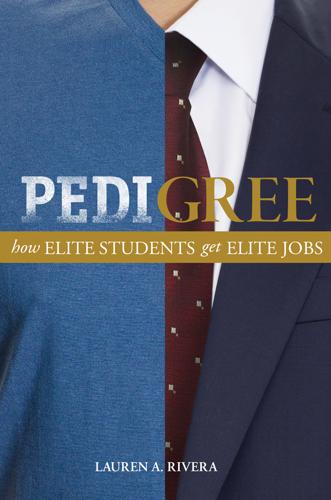
Pedigree: How Elite Students Get Elite Jobs
by
Lauren A. Rivera
Published 3 May 2015
But research shows that affluent and educated parents pass on critical economic, social, and cultural advantages to their children that give their kids a leg up in school success as well as the race for college admissions.18 Scholars often refer to these three types of advantages as forms of “capital,” because each can be cashed in for access to valued symbolic and material rewards, such as prestigious jobs and high salaries.19 Economic Advantages Income, wealth, and other types of economic capital are the most obvious resources that well-off parents can mobilize to procure educational advantages for their children. Simply put, affluent parents have more money to invest in their children’s educational growth and indeed do spend more on it.20 A crucial manner in which economic capital can provide children with educational advantages is through enabling school choice. The United States is one of the few Western industrialized countries where public primary and secondary school funding is based largely on property values within a given region. Consequently, high-quality public schools are disproportionately concentrated in geographic areas where property values are the highest and residents tend to be the most affluent.
…
Another banker, Donovan, explained, “I just try to talk to them about what they’ve done in the past, why they made the decisions they had, what they were interested in, how that manifested itself in their lives, and things specifically developed from that.” Targeted questions about undergraduate or graduate school choice as well as job and summer internship choices were particularly common. A consultant named Caitlin was a little more specific. She told me, “A lot of it is pushing in on what’s the why behind something. And so being able to, when asked a question, respond thoughtfully about, you know, why did I choose this major in college.”
…
I am only here because my father wouldn’t pay for grad school…. Seriously? Other people say they chose to go to law school because they didn’t know what else they wanted to be…. Stories like that really make you question their motivation. Attorney Keith, describing a more common but equally poor narrative of law school choice, said, “A bad answer [to the ‘why did you choose this law school’ question] is, ‘It’s the only one I got into. (He smirked.) Come on.” When I asked him to elaborate on what a good answer would be, he replied, “Maybe they wanted to be in New York to be closer to the big firms or purposely limited their search [geographically] to help run a family business or something.
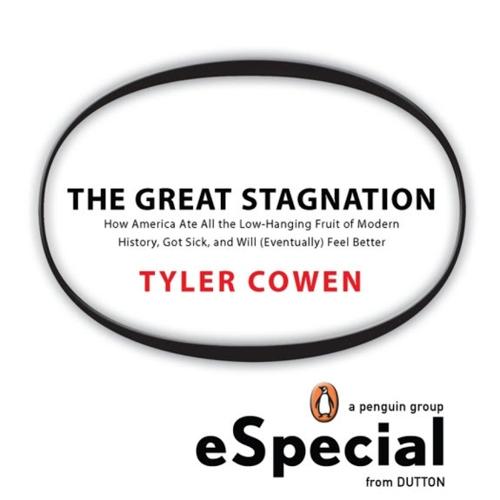
The Great Stagnation
by
Tyler Cowen
Published 24 Jan 2011
Self-education has never been more fun, and that is because we are in control of that process like never before. Third, we now see a critical mass in the American electorate favoring concrete steps to bring greater quality and accountability to K-12 education, whether through better incentives, school choice, charter schools, better monitoring, or whatever works. Siding with the schools, as they currently operate, is no longer a political winner. If we look at the current administration, the Democratic Party is often considered the “party of teachers’ unions.” Yet President Obama has opted for an education policy that, on the whole, teachers’ unions strongly dislike.
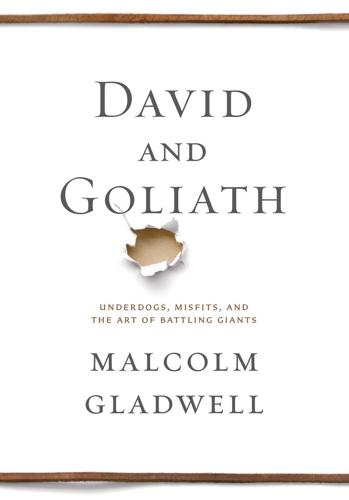
David and Goliath: Underdogs, Misfits, and the Art of Battling Giants
by
Malcolm Gladwell
Published 30 Sep 2013
How you feel about your abilities—your academic “self-concept”—in the context of your classroom shapes your willingness to tackle challenges and finish difficult tasks. It’s a crucial element in your motivation and confidence. The Big Fish–Little Pond theory was pioneered by the psychologist Herbert Marsh, and to Marsh, most parents and students make their school choices for the wrong reasons. “A lot of people think that going to an academically selective school is going to be good,” he said. “That’s just not true. The reality is that it is going to be mixed.” He went on: “When I was living in Sydney, there were a small number of selective public schools that were even more prestigious than the elite private schools.
…
Chapter Three: Caroline Sacks The discussion of the Impressionists is based on several books, principally: John Rewald, The History of Impressionism (MOMA, 1973); Ross King, The Judgment of Paris (Walker Publishing, 2006), which has a marvelous description of the world of the Salon; Sue Roe, The Private Lives of the Impressionists (Harper Collins, 2006); and Harrison White and Cynthia White, Canvases and Careers: Institutional Change in the French Painting World (Wiley & Sons, 1965), 150. The first academic paper to raise the issue of relative deprivation with respect to school choice was James Davis’s “The Campus as Frog Pond: An Application of the Theory of Relative Deprivation to Career Decisions of College Men,” The American Journal of Sociology 72, no. 1 (July 1966). Davis concludes: At the level of the individual, [my findings] challenge the notion that getting into the “best possible” school is the most efficient route to occupational mobility.

The Quiet Coup: Neoliberalism and the Looting of America
by
Mehrsa Baradaran
Published 7 May 2024
After the IRS began sending Christian schools questionnaires about the racial makeup of their student body—a consequence of the Court’s ruling in Green v. Connally (1971), which stripped so-called segregation academies of their nonprofit tax exemptions—an irate Falwell publicly denounced the immorality of the government, fulminating that “in some states, it’s easier to open a massage parlor than a Christian school.” The free market ideas of “school choice,” charter schools and vouchers, first proposed by Milton Friedman in Capitalism and Freedom and a post-Brown article, became a cause célèbre for the Christian right. It was Brown, in other words, that first turned the Christian right against government intervention. In reality, the creation of a unified and politicized religious right out of multiple Christian sects took real work and intention.
…
Issues of historic inequality, the fact of different starting positions in the economy, and the lack of choice simply don’t figure in the Law and Economics models. While Posner, Epstein, and their fellow Law and Economics adherents spoke to courts and other lawyers, Friedman and other public intellectuals of the movement spoke to the masses. They promised various reforms cloaked in the rhetoric of freedom. While some of these reforms seemed appealing—“school choice,” for example—Friedman’s wish list also included loan choice, retirement choice, and student loan choice, policies that were strategically omitted from his snappy op-eds. What the neoliberals were proposing was the eradication of safeguards that had existed since the beginning of civilization.
…
Rodriguez, 121–24 Sanders, Bernie, xl Sartre, Jean-Paul, 41 satellites, 327–28 Saturday Night Live, xv, 312, 341 Saturday Night Massacre, 109 Saudi Arabia, 39, 47, 325 savings accounts, 199, 288, 360 savings and loans, 199, 300 Scaife, Richard, 88, 89 Scaife family, 142, 306 Scalia, Antonin, 134–35, 139, 140, 145–47, 150, 151, 209, 210 scarcity, xxxi, 17, 63, 66, 330, 333, 340, 342, 362 Schmitt, Carl, 52–53 school boards, xxiii, 104–5, 117 school choice, 186, 206 school vouchers, 186 Schwartz, Anna A Monetary History of the United States, 1867–1960, 63 Schwartz, Donald, 85 Schwarzman, Stephen, 306 science (scientific method), 23, 166, 168, 234, 247, 285 Scotland, 193 “scramble for Africa,” 35 Sears, Roebuck, 200 Second Amendment, 147 Second World War.
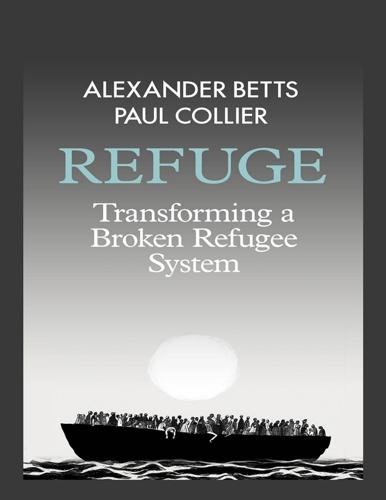
Refuge: Transforming a Broken Refugee System
by
Alexander Betts
and
Paul Collier
Published 29 Mar 2017
The globalized economy offers possibilities unimaginable seventy years ago. The internet can enable jobs, education, and money transfer to reach even the remotest communities. There are new actors: business, civil society, diaspora organizations, and refugee-led community organizations are all helping to meet refugees’ needs. There are new techniques: from school choice to food banks to organ donations, creative models of institutional design are solving allocation problems. Time has passed the refugee system by: it is now in a time-warp. But to address emerging challenges and seize potential opportunities, a new paradigm is urgently needed. The existing model is mired in collective action failure, and bereft of new thinking.
…
Another example of a creative initiative relates to the idea of using ‘preference matching’ for refugee resettlement, which was an idea developed by the Nobel-Prize winning economist Alvin Roth.13 It offers a way in which two parties to a transaction can express their preferences regarding outcomes, and then have them ‘matched’ so that they are better off than they otherwise would be. Matching can be defined as ‘an allocation of resources where both parties to the transaction need to agree to the match in order for it to take place’. It has more commonly been applied to areas such as school choice, kidney exchange, and hospital residency. Recently, two academics, Will Jones and Alex Teytelboym, explored how matching markets might be applied to refugees.14 They argued that matching potentially offers a way in which refugees can be consulted about their preferred resettlement destinations, resettlement countries can be consulted on the types of refugees they wish to receive, and refugees and states can be matched.
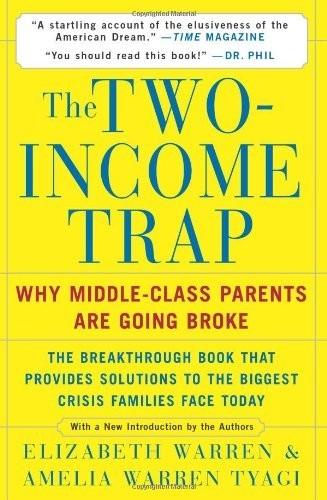
The Two-Income Trap: Why Middle-Class Parents Are Going Broke
by
Elizabeth Warren
and
Amelia Warren Tyagi
Published 17 Aug 2004
So, for example, if decent public schools were made available to all children, regardless of the child’s zip code, then the bidding wars for suburban housing would let up and the newly single mother could start off divorced life with a more modest mortgage. She also might be less reluctant to give up the family home and move into a cheaper house if a school choice policy ensured that she wouldn’t be forced to transfer the kids to an unfamiliar—and often inferior—public school. Similarly, if publicly funded preschool were made available to all children, a single mother with young children would have more leeway in her budget. In addition, policies that encourage personal savings (see chapter 3) and discourage debt (which we’ll discuss in chapter 6) would help both spouses survive the economic aftermath of divorce.
…
See also Mothers, single mothers divorce explosion of the 1970s and joint custody of children and two-income families See also Child support Domestic violence Duke University Economist Education age of children starting school college education preschool private schools public schools school choice voucher programs of women Elderly people and long-term care insurance Elections/campaigns. See also Political contributions Equal Credit Opportunity Act Equal opportunity Failing schools. See also Education, public schools Falling from Grace (Newman) Families with children (fig.).
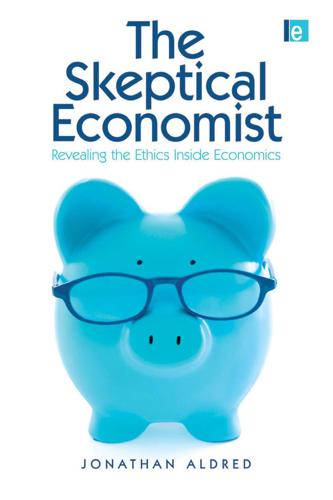
The Skeptical Economist: Revealing the Ethics Inside Economics
by
Jonathan Aldred
Published 1 Jan 2009
Focusing on these activities directly rather than the abstract idea of commodification also allows me to avoid using ugly language like ‘commodification’. The choice culture Recent governments on both sides of the Atlantic have been seduced by the mantra of ‘choice’. In the US much of the current debate focuses on school choice, while in the UK a range of policies has been used in an attempt to widen choice in both education and health care. The first argument for widening choice is very simple: it is what public service users want. Politicians of all shades who support widening choice point to opinion poll evidence of strong support for increased choice.
…
As well as the obvious costs of providing information -maintaining and monitoring an elaborate system of school and hospital performance measures — there is the cost of employing a new class of public service worker, the choice adviser. These advisers are now in place throughout England to assist parents with school choice, and have also been introduced in parts of the NHS. It is difficult to deny that such advisers help pawns become queens, but might it not be better simply to spend the money on more doctors and teachers? And why not let the doctors and teachers provide the choice advice? This brings us back to the question of motivation, both of public service workers and those attempting reform.
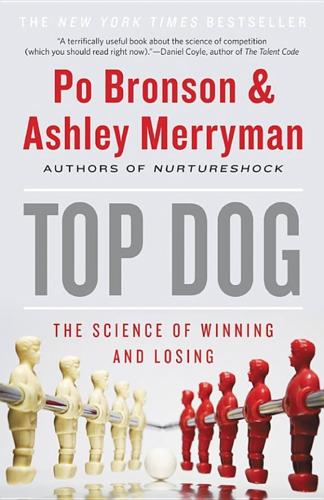
Top Dog: The Science of Winning and Losing
by
Po Bronson
and
Ashley Merryman
Published 19 Feb 2013
Gender Differences in Responding to Competitive Academic Environments: Angrist, Joshua, & Victor Lavy, “The Effects of High Stakes High School Achievement Awards: Evidence from a Randomized Trial,” American Economic Review, vol. 99(4), pp. 1384–1414 (2009) Barankay, Iwan, “Gender Differences in Productivity Responses to Performance Rankings: Evidence from a Randomized Workplace Experiment,” Working Paper, Wharton School of Business, University of Pennsylvania (2011) Cotton, Christopher, Frank McIntyre, & Joseph Price, “The Gender Gap Cracks under Pressure: A Detailed Look at Male and Female Performance Differences during Competitions” (2010) Deming, David J., Justine S. Hastings, Thomas Kane, & Douglas Staiger, “School Choice and College Attendance: Evidence from Randomized Lotteries,” DHKS Draft (2009) Deming, David J., Justine S. Hastings, Thomas J. Kane, & Douglas O. Staiger, “School Choice, School Quality, and Postsecondary Attainment,” American Economic Review (forthcoming) (July 2012) Dobbie, Will, & Ronald G. Fryer Jr., “Are High-Quality Schools Enough to Increase Achievement Among the Poor?
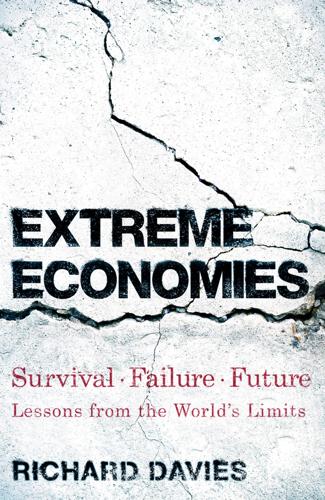
Extreme Economies: Survival, Failure, Future – Lessons From the World’s Limits
by
Richard Davies
Published 4 Sep 2019
Arango, M., Evans, S., and Quadri, Z. (2016), Education Reform in Chile: Designing a Fairer, Better Higher Education System, Woodrow Wilson School of Public and International Affairs, Princeton University, viewed 18 January 2019. Bellei, C. (2008), ‘The Private–Public School Controversy: The Case of Chile’, in Chakrabarti, R., and Peterson, P. E. (eds.), School Choice International: Exploring Public–Private Partnerships (Cambridge, Mass.: MIT Press). ————, and Cabalin, C. (2013), ‘Chilean Student Movements: Sustained Struggle to Transform a Market-oriented Educational System’, Current Issues in Comparative Education, 15 (2), 108–23. Brookings (2009), ‘The IMF’s Outlook for Latin America and the Caribbean: Stronger Fundamental Outlook’, Washington, DC, 21 May.
…
. ———— (1982b), ‘Free Markets and the Generals’, Newsweek, 25 January. Fuentes, C., and Valdeavellano, R. (2015), Chicago Boys, CNTV, November. Han, B.-C. (2017), Psychopolitics: Neoliberalism and New Technologies of Power (London: Verso). Hsieh, C., and Urquiola, M. (2006), ‘The Effects of Generalized School Choice on Achievement and Stratification: Evidence from Chile’s Voucher Program’, Journal of Public Economics, 90, 1481. ICA (1959), Working with People: Examples of US Technical Assistance (Washington, DC: International Cooperation Administration). Klinenberg, E. (2018), Palaces for the People: How Social Infrastructure Can Help Fight Inequality, Polarization, and the Decline of Civic Life (London: Bodley Head).
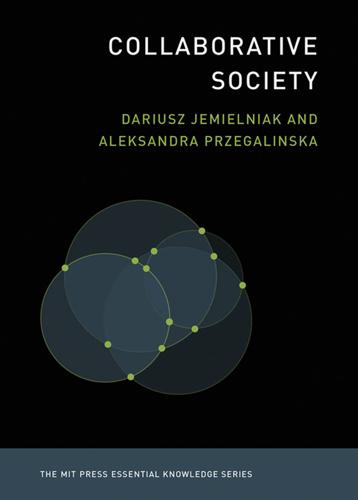
Collaborative Society
by
Dariusz Jemielniak
and
Aleksandra Przegalinska
Published 18 Feb 2020
Memes in Digital Culture, Limor Shifman Metadata, Jeffrey Pomerantz The Mind–Body Problem, Jonathan Westphal MOOCs, Jonathan Haber Neuroplasticity, Moheb Costandi Nihilism, Nolen Gertz Open Access, Peter Suber Paradox, Margaret Cuonzo Post-Truth, Lee McIntyre Quantum Entanglement, Jed Brody Recycling, Finn Arne Jørgensen Robots, John Jordan School Choice, David R. Garcia Self-Tracking, Gina Neff and Dawn Nafus Sexual Consent, Milena Popova Smart Cities, Germaine R. Halegoua Spaceflight, Michael J. Neufeld Spatial Computing, Shashi Shekhar and Pamela Vold Sustainability, Kent E. Portney Synesthesia, Richard E. Cytowic The Technological Singularity, Murray Shanahan 3D Printing, John Jordan Understanding Beliefs, Nils J.
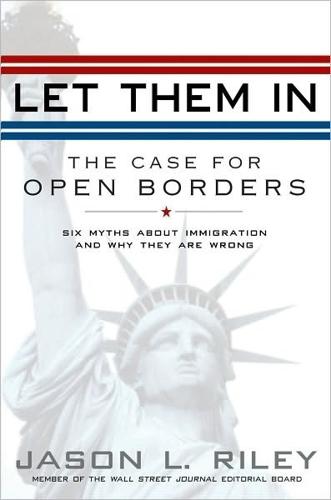
Let Them In: The Case for Open Borders
by
Jason L. Riley
Published 14 May 2008
Considering that black children also watch more TV, read fewer books, and are overrepresented in the worst public schools in the country, those findings shouldn’t come as a surprise. What’s truly jarring is that so many black lawmakers, from Congressmen on down, support policies that keep black children stuck in those failing schools. In deference to the National Education Association teachers’ union, which is anathema to school choice, the black political class works diligently to block black access to vouchers and charter schools and other reforms that could facilitate a decent education. Before blaming the diminished job prospects of Jamal on Jorge, blacks would do better to address the anti-intellectualism that permeates the culture of the black underclass.
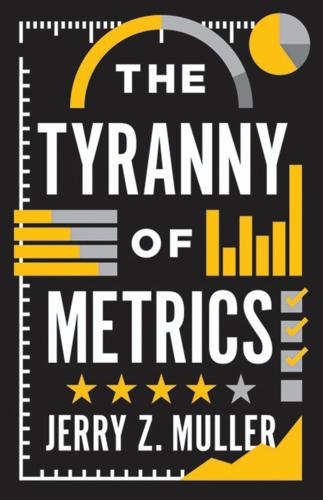
The Tyranny of Metrics
by
Jerry Z. Muller
Published 23 Jan 2018
Edward Kennedy, and passed both houses of Congress with both Republican and Democratic support, despite opposition from conservative Republicans antipathetic to the spread of federal power over education, and of some liberal Democrats.5 Yet more than a decade after its implementation, the benefits of the accountability provisions of the NCLB remain elusive. (Other aspects of NCLB—which promoted greater school choice, the creation of charter schools, and higher qualifications for teachers—seem to have been more successful, but are beyond the scope of our subject.) Its advocates grasp at any evidence of improvement on any test at any grade in any demographic group for proof of NCLB’s efficacy. But test scores for primary school students went up only slightly, and no more quickly than before the legislation was enacted, and its impact upon the test scores of high school students has been more limited still.

The Numbers Game: The Commonsense Guide to Understanding Numbers in the News,in Politics, and inLife
by
Michael Blastland
and
Andrew Dilnot
Published 26 Dec 2008
One school, Kesteven and Grantham Girls’ School, went from 30th in the raw GCSE tables to 317th out of the 370 sampled. Another, St. Albans C of E School in Birmingham, traveled in the opposite direction from 344th to 16th. Parents could be forgiven for wondering, in light of all this, what the comparisons of the past fifteen years that had put so many millions of them into a rabid panic about school choice had actually told them. And there, so far, ends the history, but not the controversy. The CVA tables—complicated and loaded with judgments—have moved far from the early ideal of transparent accountability. It also turns out that the confidence intervals (how big the range of possible ranking-chart positions for any school must be before we are 95 percent sure that the correct one is in there) are still so large that we cannot really tell most of the schools apart, even though they will move around with much drama from one year to the next in the published charts.
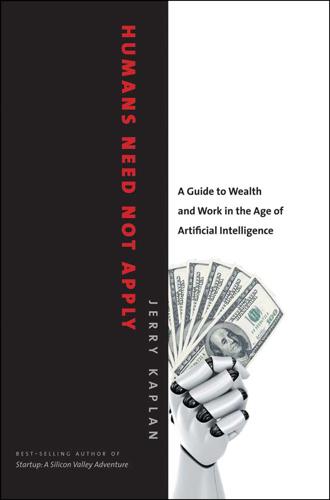
Humans Need Not Apply: A Guide to Wealth and Work in the Age of Artificial Intelligence
by
Jerry Kaplan
Published 3 Aug 2015
“Fact Sheet on the President’s Plan to Make College More Affordable: A Better Bargain for the Middle Class,” press release, the White House, August 22, 2013, http://www.whitehouse.gov/the-press-office/2013/08/22/fact-sheet-president-s-plan -make-college-more-affordable-better-bargain-. 44. Daniel Kaplan, “Securitization Era Opens for Athletes,” Sports Business Daily, March 12, 2001, http://www.sportsbusinessdaily.com/Journal/Issues/2001/03/20010312/This-Weeks-Issue/Securitization-Era-Opens-For-Athletes.aspx. 45. http://www.edchoice.org/The-Friedmans/The-Friedmans-on-School-Choice/The-Role-of-Government-in-Education-%281995%29.aspx, 1955. 46. For a recent policy analysis, see Miguel Palacios, Tonio DeSorrento, and Andrew P. Kelly, “Investing in Value, Sharing Risk: Financing Higher Education Through Income Share Agreements,” AEI Series on Reinventing Financial Aid, Center on Higher Education Reform, American Enterprise Institute (AEI), February 2014, http://www.aei.org/wp-content/uploads/2014/02/-investing-in-value-sharing-in-risk-financing-higher-education-through-inome-share-agreements_083548906610.pdf. 47.
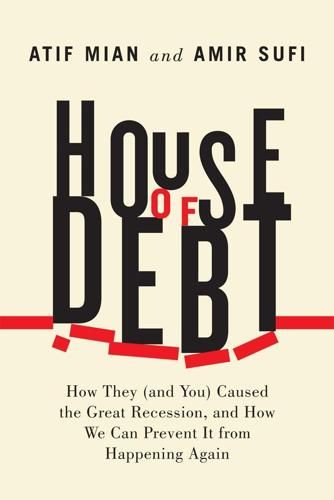
House of Debt: How They (And You) Caused the Great Recession, and How We Can Prevent It From Happening Again
by
Atif Mian
and
Amir Sufi
Published 11 May 2014
See Elena Del Rey and Maria Racionero, “Financing Schemes for Higher Education,” European Journal of Political Economy 26 (2010): 104–13. 10. Milton Friedman, “The Role of Government in Education,” in Economics and the Public Interest, ed. Robert A Solo (New Brunswick, NJ: Rutgers University Press, 1955), http://www.edchoice.org/The-Friedmans/The-Friedmans-on-School-Choice/The-Role-of-Government-in-Education- percent281995 percent29.aspx. 11. We are not the first to propose risk-sharing arrangements in mortgage finance. See, for example, Andrew Caplin, Sewin Chan, Charles Freeman, and Joseph Tracy, Housing Partnerships (Cambridge, MA: MIT Press, 1997); Andrew Caplin, Noel Cunningham, Mitchell Engler, and Frederick Pollock, “Facilitating Shared Appreciation Mortgages to Prevent Housing Crashes and Affordability Crises” (discussion paper 2008-12, Hamilton Project, September 2008); and David Miles, “Housing, Leverage, and Stability in the Wider Economy” (speech at the Housing Stability and Macroeconomy: International Perspectives Conference, Federal Reserve Bank of Dallas, November 2013), available at http://www.bankofengland.co.uk/publications/Pages/news/2013/132.aspx. 12.
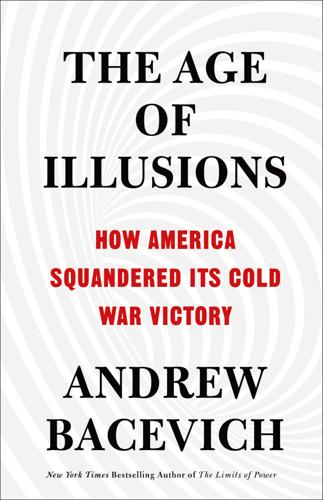
The Age of Illusions: How America Squandered Its Cold War Victory
by
Andrew J. Bacevich
Published 7 Jan 2020
As his political model, Trump cited Wendell Willkie, the business executive who in 1940 captured the Republican presidential nomination, only to be defeated in the general election by Franklin Roosevelt. Willkie was a centrist, as was the circa 2000 version of Donald Trump. In The America We Deserve, Trump came out in favor of safe streets, safe schools, new schools, and school choice. He opposed discrimination, whether based on race, gender, or sexual orientation. He was pro-choice, but would prohibit partial birth abortions. He supported gun rights, but also a ban on assault weapons. To get ahead of crime, he advocated “proactive” policing. To promote economic growth, he proposed cutting taxes, cutting bureaucracy, and cutting burdensome regulations.
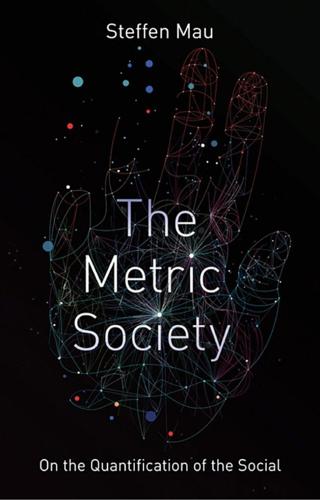
The Metric Society: On the Quantification of the Social
by
Steffen Mau
Published 12 Jun 2017
The ‘choice revolution’ (Blomqvist 2004) means that service consumers do now indeed get to choose between a range of offerings. For this to work, the service market needs to be sufficiently differentiated, but there also needs to be a sufficient supply of information on the available options. With regard to school choice, for example, it has been argued from an economic perspective that state schools have no incentive to improve quality due to the fact of automatic enrolment; competition for pupils, it is claimed, would sharpen their response to parents’ interests and wishes. Educational demand is becoming a consumer choice, forcing schools to compete with each other on the basis of indicators: Functional quasi-markets require an infrastructure in the form of an information system for ensuring market transparency….
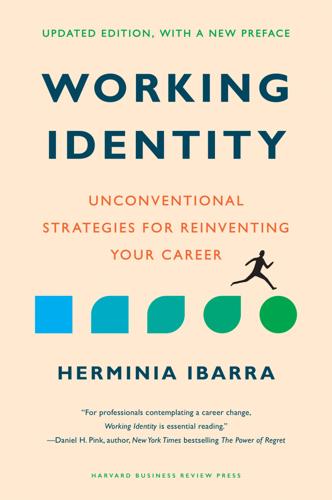
Working Identity, Updated Edition, With a New Preface: Unconventional Strategies for Reinventing Your Career
by
Herminia Ibarra
Published 17 Oct 2023
When I got bogged down in the same old thing again, I told Carl I was fed up. He said, “We need a CFO. Why don’t you join us?” And then I just jumped. It was not a calculated move. I always thought that one day something was going to drift by and I’d grab it. I knew this was it. Today the range of adult “back to school” choices is far and wide. More and more universities are developing midcareer courses explicitly aimed at helping people change careers.12 Certification courses such as coaching qualifications and non-executive-director accreditations are popular because they build specific skills and credentials, can often be done on the side, and leave alumni with pre-formed networks to tap for future work.

The Achievement Habit: Stop Wishing, Start Doing, and Take Command of Your Life
by
Bernard Roth
Published 6 Jul 2015
I believe these experiences made me more autonomous and capable than I would have been if I had received the same degree of parental guidance as most of my peers. In addition to the personal, lifelong sense of loss associated with not having my mother, the downside of being on my own was that I received my guidance from the people on the street. Not everything they advised was wise or legal. My high school choice was basically made by Charlie, a senior playing football for Stuyvesant High School. I still recall his words of wisdom, “Go to Stuyvesant; you’re not smart enough to get into Bronx Science.” I allowed guys like Charlie to define the limits of what I could achieve. I could beat myself up for that.
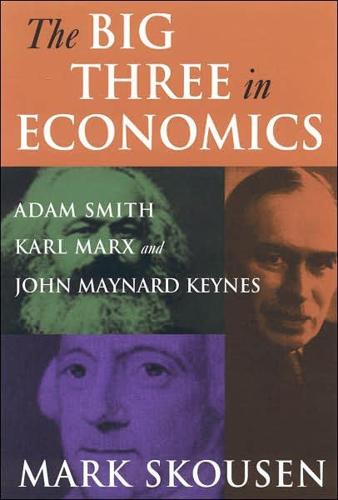
Big Three in Economics: Adam Smith, Karl Marx, and John Maynard Keynes
by
Mark Skousen
Published 22 Dec 2006
Keynes concluded, "It would not be foolish to contemplate the possibility of a greater progress still" (Keynes 1963 [1930], 365). Market forces are on the march. The collapse of the Keynesian paradigm and Marxist communism has turned "creeping socialism" into "crumbling socialism." There is no telling how high the world's standard of living can reach through expanded trade, lower tariffs, a simplified tax system, school choice, Social Security privatization, a fair system of justice, and a stable monetary system. Yet bad policies, wasted resources, and class hatred die slowly. As Milton Friedman once wrote, "Freedom is a rare and delicate flower" (1998, 605). Unless market economists are vigilant, natural liberty and universal prosperity will be on the defensive again.
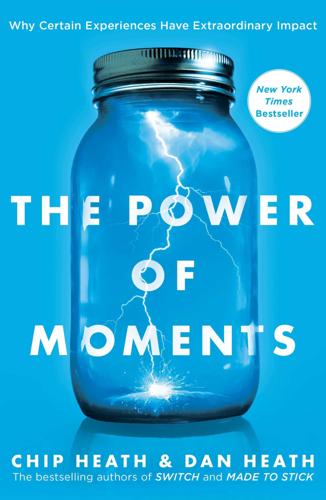
The Power of Moments: Why Certain Experiences Have Extraordinary Impact
by
Chip Heath
and
Dan Heath
Published 2 Oct 2017
Frey’s challenge to walk the grounds already added a sense of play to the moment. What if he had also given them a “character” to role-play during their observations? For example, “You are a 28-year-old Hispanic single mother with two children, and you’ve just moved here. You’re anxious about school choices and a friend told you about our day school. You wonder if it’s right for your kids.” That might have made it even easier to see the church with fresh eyes. Add INSIGHT: 1: Trip over the truth. Frey’s activity allowed the vestry to discover insights for themselves. The resulting ideas (adding signage in Spanish, inviting other community groups to use the church’s facilities) became their ideas as a result.

Artificial Unintelligence: How Computers Misunderstand the World
by
Meredith Broussard
Published 19 Apr 2018
If you want to see the kinds of fireworks that can explode around educational standards, check out the 2014 Colorado fights about the content of the AP US History exam.2 Republicans, Democrats, the National Education Association, the American Federation of Teachers, Americans for Prosperity (a conservative group backed by the libertarian Koch brothers), school choice activists, real estate developers, elected officials of local school boards, and the College Board all entered into in this skirmish that made national news. Education has long been a battleground in America’s culture wars. The case of the school standards failure nationwide is an illustration of what happens when engineering solutions are applied to social problems.
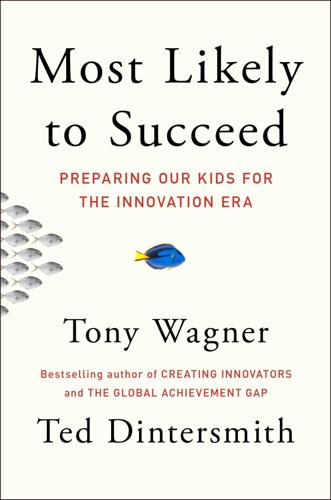
Most Likely to Succeed: Preparing Our Kids for the Innovation Era
by
Tony Wagner
and
Ted Dintersmith
Published 17 Aug 2015
To date, there’s no national strategy for identifying successful innovations in specific schools or networks and determining how they can scale across our 137,000 schools. Compounding the problem, business leaders generally believe that if we could only introduce free-market dynamics into schools (e.g., charter schools, choice vouchers for parents), our most promising education innovations would thrive. But profound advances in education have impacts that stretch out over lifetimes, not months. Real innovation in education often isn’t readily transparent to those funders or politicians who just want to see numbers on paper.

Mindwise: Why We Misunderstand What Others Think, Believe, Feel, and Want
by
Nicholas Epley
Published 11 Feb 2014
Not so in cases of true conflict or in politics, where the dangers of defining groups by their differences is even more apparent. Consider politics. Surveys of the American electorate over the last thirty-five years have shown surprisingly stable differences of opinion between Republicans and Democrats on attitudes such as government-run health care, military defense spending, school choice, and funding for government welfare programs. The American electorate has also exaggerated the magnitude of these differences, particularly in recent years, as elected officials have become more polarized in their own behavior.30 Graphical depictions that highlight the differences between “red states” and “blue states” only make matters worse, according to research, increasing the perceived differences between groups rather than merely reflecting them.31 And on specific issues ranging from affirmative action to welfare policies, people on opposing sides of each issue consistently assume that the other side is more extreme than it actually is.32 The sad fact is that real partisanship increases partly because of imagined partisanship on the other side.

War for Eternity: Inside Bannon's Far-Right Circle of Global Power Brokers
by
Benjamin R. Teitelbaum
Published 14 May 2020
He also issued a flurry of memoranda promoting the construction of a series of oil pipelines—including one that crossed key waterways and which Native Americans claimed threatened the environmental integrity of their sacred sites—as well as a memorandum aimed at easing regulations for manufacturing. The president took the next day to proclaim the entire week, by means of a presidential proclamation, National School Choice Week in recognition of nonpublic and charter schools. He also issued executive order 13767, “Border Security and Immigration Enforcement Improvements,” calling for the immediate construction of a physical wall along the U.S. southern border with Mexico and the acceleration of processing and deportation of illegal immigrants.

No Such Thing as a Free Gift: The Gates Foundation and the Price of Philanthropy
by
Linsey McGoey
Published 14 Apr 2015
In the case of small schools, some school districts had less than three years to show significant improvement before the foundation started signalling a change in direction, slashing funding at the very time when many schools felt they needed more resources to stay the course. ‘In the area of education’, William Schambra, of the Hudson Institute’s Bradley Center for Philanthropy and Civic Renewal, based in DC, said to me, ‘I’m a down-the-line conservative. I’m a believer in school choice and I’m a believer in charters. I’m a believer in anything that can break the monopoly of public sector unions in the field of education’. The problem with the Gates Foundation’s increased role in public education, he went on, is that large-scale efforts to reengineer education systems end up circumscribing rather than expanding choice at the community level.
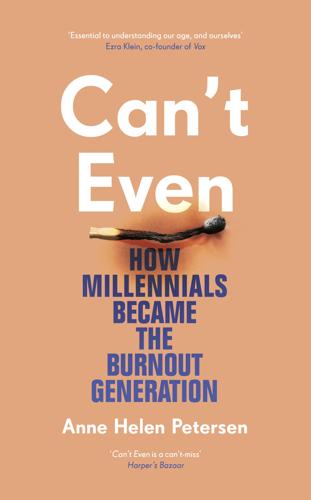
Can't Even: How Millennials Became the Burnout Generation
by
Anne Helen Petersen
Published 14 Jan 2021
But contemporary parenting standards mean that children become the work. You must work outside the home to get enough money to pay for their concerted cultivation, but also all the actual labor of concerted cultivation itself. The books I’d need to read, the groups I’d need to join, the stultifying group music classes I’d need to attend, the school choice stress I’d need to resist, the judgment I’d internalize and let expand within me until it devoured me entirely. Work, work, work. That’s why I couldn’t see myself doing it: I was already working myself into the ground, spreading myself thin, barely getting by. More work—without support, without accommodation, or understanding—felt like it would disintegrate me entirely.
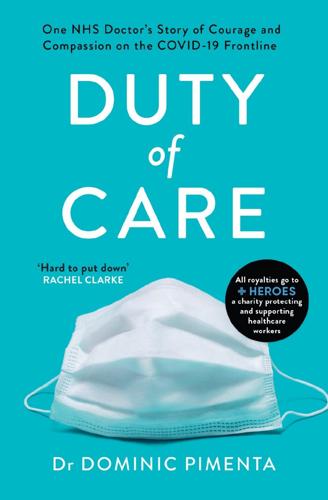
Duty of Care: One NHS Doctor's Story of the Covid-19 Crisis
by
Dr Dominic Pimenta
Published 2 Sep 2020
When I originally moved up from the quiet South Coast to go to medical school in London, many of my friends and family took a pretty dim view, Mum especially. She’d banned me from applying to more than one medical school in London and would have much preferred that I went to Southampton and lived at home. Needless to say, I didn’t apply to Southampton. In fact, I changed my medical school choice on a whim on the day of the UCAS application from Imperial to UCL, the only university that actually accepted me and the place where I met my wife. So much of our lives hinge on such seemingly small decisions. In my first year a friend of mine from school came up to visit, arriving at King’s Cross at 5 p.m. on a Friday.
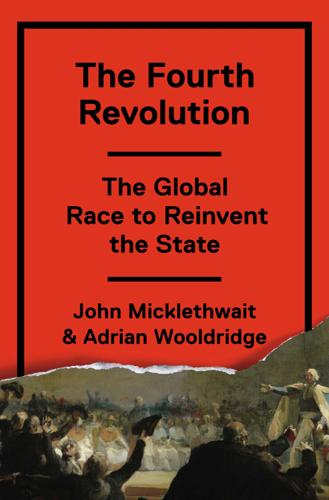
The Fourth Revolution: The Global Race to Reinvent the State
by
John Micklethwait
and
Adrian Wooldridge
Published 14 May 2014
Zeckhauser, Collaborative Governance: Private Roles for Pubic Goals in Turbulent Times (Princeton, NJ: Princeton University Press, 2011), p. 9. 24. Bernard Marr and James Creelman, More with Less: Maximizing Value in the Public Sector (London: Palgrave Macmillan, 2011), p. 18. 25. Ibid., p. 55. 26. Anders Böhlmark and Mikael Lindahl, “The Impact of School Choice on Pupil Achievement, Segregation and Costs: Swedish Evidence” (IZA Discussion Paper no. 2786, May 2007), available at http://ftp.iza.org/dp2786.pdf. 27. Stephen Machin and James Vernoit, “Changing School Autonomy: Academy Schools and Their Introduction to England’s Education” (Centre for the Economics of Education discussion paper no. 123, April 2011), available at http://cee.lse.ac.uk/ceedps/ceedp123.pdf. 28.
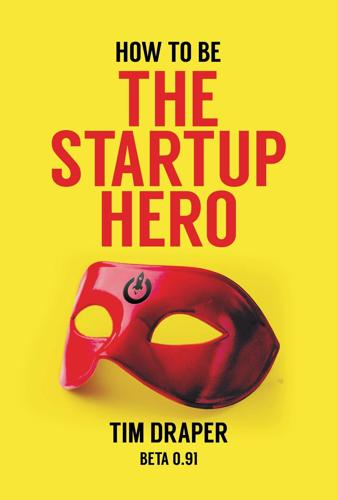
How to Be the Startup Hero: A Guide and Textbook for Entrepreneurs and Aspiring Entrepreneurs
by
Tim Draper
Published 18 Dec 2017
BizWorld also raises money from an annual dinner in which Joe Saunders of Visa, Paul Jacobs of Qualcomm, and Meg Whitman of eBay were honored in the past. Pursuing #54 on my bucket list has led me to build relationships with some of the most powerful people in technology. BizWorld also led me to the California initiative for school choice (school vouchers). When I first taught BizWorld, I noticed how stark the classrooms were in my daughter’s school. I started asking questions, and I realized there were structural issues that made it difficult to teach and manage schools now. I decided to see how I could help change the system.

Everything Is Obvious: *Once You Know the Answer
by
Duncan J. Watts
Published 28 Mar 2011
For an even more negative viewpoint of the effect of foreign aid in Africa, see Moyo (2009), who argues that it has actually hurt Africa, not helped. For a more hopeful alternative viewpoint see Sachs (2006). 19. See Jacobs (1961, p. 4) 20. See Venkatesh (2002). 21. See Ravitch (2010) for a discussion of how popular, commonsense policies such as increased testing and school choice actually undermined public education. See Cohn (2007) and Reid (2009) for analysis of the cost of health care and possible alternative models. See O’Toole (2007) for a detailed discussion on forestry management, urban planning, and other failures of government planning and regulation. See Howard (1997) for a discussion and numerous anecdotes of the unintended consequences of government regulations.
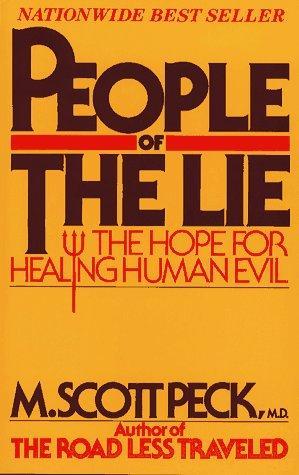
People of the Lie: The Hope for Healing Human Evil
by
M Scott Peck
Published 1 Jan 1983
I began with the case of Bobby and his parents because of its obvious clarity. To give a child his older brother’s suicide weapon is an act of such gross outrageousness that anyone would think, yes, that is evil all right. But there was no such grossly outrageous act committed by Roger’s parents; we are dealing only with trip permissions and school choices—the ordinary kind of decisions that parents routinely make. Simply because the judgment of Roger’s parents in these matters differed from my own may not seem grounds for labeling them evil. Indeed, might I not be guilty of evil myself by so labeling clients who disagree with my opinions and fail to take my advice?
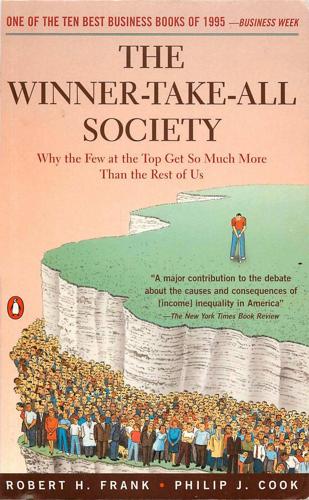
The Winner-Take-All Society: Why the Few at the Top Get So Much More Than the Rest of Us
by
Robert H. Frank, Philip J. Cook
Published 2 May 2011
Paper presented at the annual meetings of the American Economic Association, Washington, D.C., January, 1995. Freifeld, Karen. "College Promise Pays Off." Newsday, June 24, 199 1 , p. 4. Fuller, Wmship c., Charles F. Manski, and David A. Wise. "New Evidence on the Economic Detenninants of Postsecondary Schooling Choices. Journal o/Human Resources 27, 4 ( 1982): 477-98. Fullerton, Don, and Diane Lim Rogers. Who Bears the Lifetime Tax Burden? Washington, D.C.: The Brookings Institution, 1993. Gabler, Neil. Winchell: Gossip, Power and the Culture 0/ Celebrity. New York: Alfred A. Knopf, 1 994. Gabriel, 'llip. "Donovan Leitch: He's It!
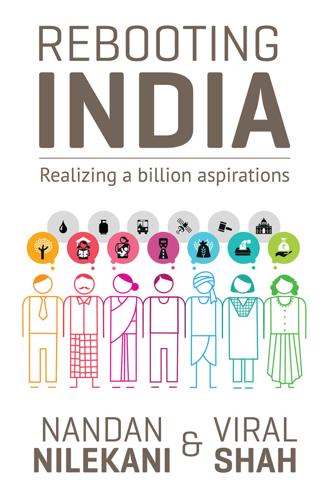
Rebooting India: Realizing a Billion Aspirations
by
Nandan Nilekani
Published 4 Feb 2016
http://www.sakshat.ac.in. NPTEL http://nptel.ac.in 15. ‘47% of graduates of 2013 unemployable for any job: Study’. 27 December 2013. Economic Times. http://articles.economictimes.indiatimes.com/2013-12-27/news/45626762_1_employability-aspiring-minds-graduates 16. Voucher schemes in India, School Choice, Centre for Civil Society. http://www.schoolchoice.in/voucherschemeindia.php 17. Hebbar, Nistula. 29 August 2014. ‘PM Modi’s big plan: Get education, medical & birth records online in a Digital Locker’. Economic Times. http://articles.economictimes.indiatimes.com/2014-08-29/news/53362935_1_prime-minister-narendra-modi-suggestions-government-offices 18.
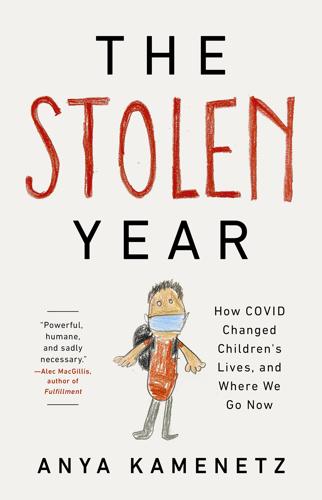
The Stolen Year
by
Anya Kamenetz
Published 23 Aug 2022
Or, in Frederick Douglass’s words, DeAngelis objects that children mostly start kindergarten at “the nearest school house, and the best school house in their own neighborhood.” When I spoke to DeAngelis in the spring of 2021, he, like many anti–public school conservatives, saw opportunity in the crisis: “2021 could be the year of school choice, partially because of the teachers’ unions’ influence on keeping the schools closed for so long.” His dream is a universal voucher program, where taxpayer funds are parceled out directly to families to spend as they wish, with no public school “monopoly.” Meaning, no collectively funded infrastructure to provide education as a public good.
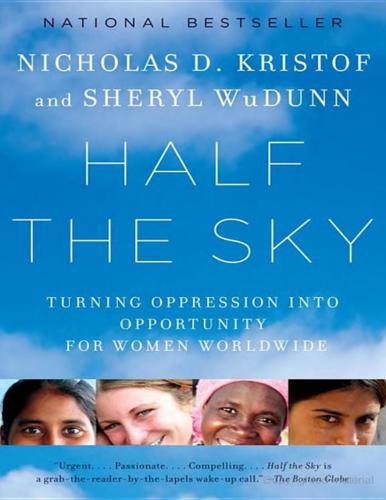
Half the Sky: Turning Oppression Into Opportunity for Women Worldwide
by
Nicholas D. Kristof
and
Sheryl Wudunn
Published 7 Sep 2008
Because girls didn’t matter and traditionally were outside the networks, they were allowed to choose English-language schools. Once the girls learned English, they were able to compete for well-paying jobs. Kaivan Munshi and Mark Rosenzweig, “Traditional Institutions Meet the Modern World: Caste, Gender, and Schooling Choice in a Globalizing Economy,” The American Economic Review 96, no. 4 (September 2006): 1225–52. 210 Sweatshops have given women a boost: A feminist critique of trade has emerged that disputes our arguments; it asserts that young women are often exploited and preyed upon in sweatshops. There is an element of truth to such charges.
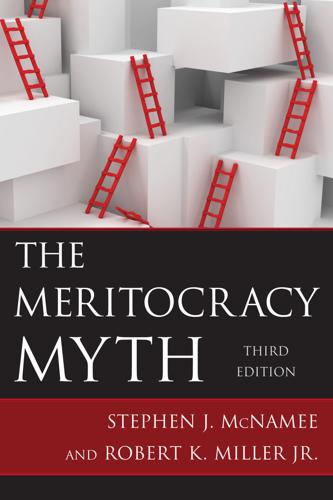
The Meritocracy Myth
by
Stephen J. McNamee
Published 17 Jul 2013
By the 2003–2004 school year, for instance, 73 percent of black students attended schools with a student body made up primarily of minority students (Orfield and Lee 2006). Much of the resegregation that exists today is between school districts and is due to the abandonment of integration measures such as school busing. In addition, the rise of charter schools, magnet schools, and other alternate school choice settings have accelerated the trend toward resegregation as white families seek alternatives to sending their children to school districts with high minority enrollments. Finally, official segregation figures often underestimate the actual amount of segregation because calculations are typically based only on public school data.
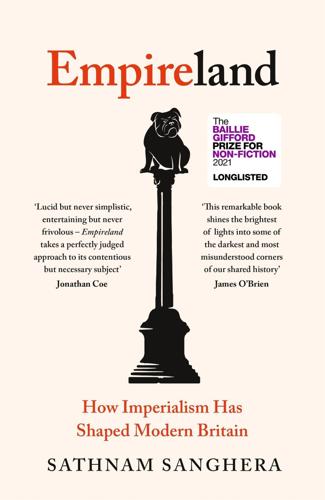
Empireland: How Imperialism Has Shaped Modern Britain
by
Sathnam Sanghera
Published 28 Jan 2021
Just as British food was seen as the best, and just as David Gilmour reports that colonialists fetishized other British items like Vaseline, Pears Soap and Anadin,20 there was a feeling among imperial Britons that British was best when it came to education. The feeling is echoed today, with Yvonne McNulty, an expat academic specializing in expatriation research, remarking in 2017 that school choices abroad are often a consequence of parental emotion (‘There’s a lot of guilt linked to moving abroad so [parents] want to make it up to their children’), just as it is echoed in the advice issued by the Council of International Schools to the Daily Telegraph in 2012 that ‘sticking with the British national curriculum will make any move back to the UK less problematic … A child may feel more secure in their home environment, so a UK boarding school is worth considering.’
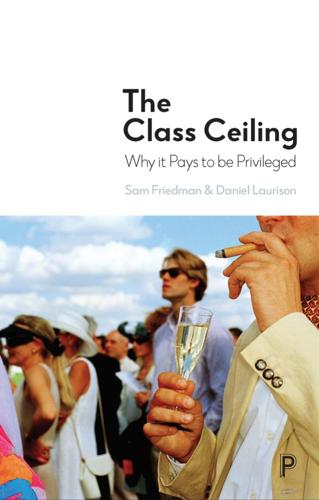
The Class Ceiling: Why It Pays to Be Privileged
by
Sam Friedman
and
Daniel Laurison
Published 28 Jan 2019
Davis, K. and Moore, W.E. (1945) ‘Some principles of stratification’, American Sociological Review, 10(2), 242-49 (https://doi.org/10.2307/2085643). Dean, D. (2005) ‘Recruiting a self: Women performers and aesthetic labour’, Work, Employment and Society, 19(4), 761-74 (https://doi.org/10.1177/0950017005058061). Dearden, L., Ryan, C. and Sibieta, L. (2011) ‘What determines private school choice? A comparison between the United Kingdom and Australia’, Australian Economic Review, 44(3), 308-20 (https://doi.org/10.1111/j.1467-8462.2011.00650.x). De Benedictis, S., Allen, K. and Jensen, T. (2017) ‘Portraying poverty: The economics and ethics of factual welfare television’, Cultural Sociology, 11(3), 337-58 (https://doi. org/10.1177/1749975517712132). de Graft-Johnson, A., Manley, S. and Greed, C. (2005) ‘Diversity or the lack of it in the architectural profession’, Construction Management and Economics, 23(10), 1035-43 (https://doi. org/10.1080/01446190500394233). de Keere, K. (2014) ‘From a self-made to an already-made man: A historical content analysis of professional advice literature’, Acta Sociologica, 57(4), 311-24 (https://doi. org/10.1177/0001699314552737).

Super Thinking: The Big Book of Mental Models
by
Gabriel Weinberg
and
Lauren McCann
Published 17 Jun 2019
If the group studied isn’t representative, then the results may not be applicable overall. Essentially, you must be really careful when drawing conclusions based on nonrandom experiments. The Dilbert cartoon above pokes fun at the selection bias inherent in a lot of the studies reported in the news. A similar selection bias occurs with parents and school choice for their kids. Parents understandably want to give their kids a leg up and will often move or pay to send their kids to “better schools.” However, is the school better because there are better teachers or because the students are better prepared due to their parents’ financial means and interest in education?
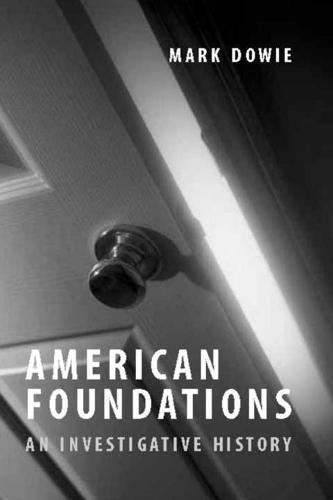
American Foundations: An Investigative History
by
Mark Dowie
Published 3 Oct 2009
Perhaps restructure would be a better word, or reformulate, as both they and Bill Bennett seek not simply to reform but to redefine everything about contemporary education: public schools, teachers, local control, students, and curricula." Redefinition, in their formulation, is the prelude to privatization. The conservatives talk the usual talk about parent participation, teacher preparation, school choice, competition, and charter schools. They point out, quite correctly, that as long as inner city schools are supported by residential property taxes their students will not receive an equal education. The conservative solution, however, is not a more equitable tax structure or state and federal subsidies for inner city schools.
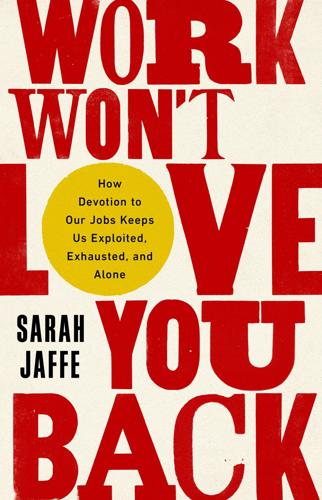
Work Won't Love You Back: How Devotion to Our Jobs Keeps Us Exploited, Exhausted, and Alone
by
Sarah Jaffe
Published 26 Jan 2021
It invested in organizations like Students in Free Enterprise (SIFE), now known as Enactus, which sponsors programs at universities to teach students about the beauties of “free enterprise,” otherwise known as capitalism. It poured money into small Christian colleges, from which it harvested management trainees loyal to the company and its professed values and willing to put in long hours. And through the Walton Family Foundation, it directed funds to “school choice,” the euphemism for privately owned charter schools. According to the foundation’s own documents, one in every four charter schools created in the United States has received Walton Family funds. Such an investment in education has ideological goals; it aims to reshape schools and what and how they teach.
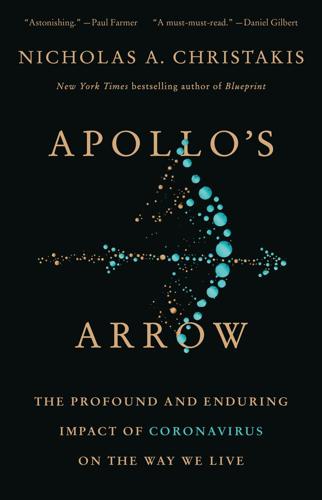
Apollo's Arrow: The Profound and Enduring Impact of Coronavirus on the Way We Live
by
Nicholas A. Christakis
Published 27 Oct 2020
Eventually, a smaller number of physical schools might come to function as primary learning hubs, with learning “spokes” found at home, in libraries, museums, community colleges, clubs, enrichment programs, and elsewhere in the community. We can expect that already heated debates about school consolidation and school choice will likely accelerate as public schools adapt to a more personalized approach to education and as a variety of adults (coaches, counselors, college students, homeschooling parents, online experts) assume greater responsibility for children’s learning. The disarray prompted by the pandemic is likely to provide an impetus for such a rethinking at higher levels of education too.
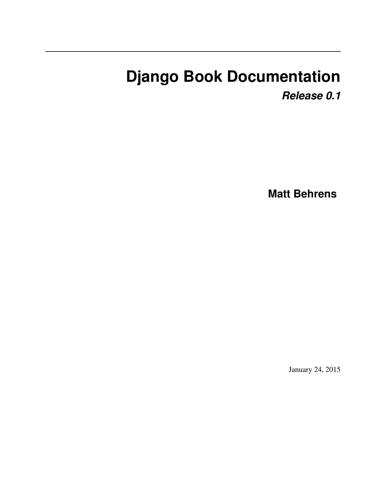
Django Book
by
Matt Behrens
Published 24 Jan 2015
Note that this is different than null. null is purely database-related, whereas blank is validation-related. If a field has blank=True, validation on Django’s admin site will allow entry of an empty value. If a field has blank=False, the field will be required. choices An iterable (e.g., a list or tuple) of 2-tuples to use as choices for this field. A choices list looks like this: YEAR_IN_SCHOOL_CHOICES = ( ('FR', 'Freshman'), ('SO', 'Sophomore'), ('JR', 'Junior'), ('SR', 'Senior'), ('GR', 'Graduate'), ) The first element in each tuple is the actual value to be stored. The second element is the human-readable name for the option. The choices list can be defined either as part of your model class: class Foo(models.Model): GENDER_CHOICES = ( ('M', 'Male'), ('F', 'Female'), ) gender = models.CharField(max_length=1, choices=GENDER_CHOICES) or outside your model class altogether: GENDER_CHOICES = ( ('M', 'Male'), ('F', 'Female'), ) class Foo(models.Model): gender = models.CharField(max_length=1, choices=GENDER_CHOICES) You can also collect your available choices into named groups that can be used for organizational purposes in a form: MEDIA_CHOICES = ( ('Audio', ( ('vinyl', 'Vinyl'), ('cd', 'CD'), ) ), ('Video', ( ('vhs', 'VHS Tape'), ('dvd', 'DVD'), ) ), ('unknown', 'Unknown'), ) The first element in each tuple is the name to apply to the group.
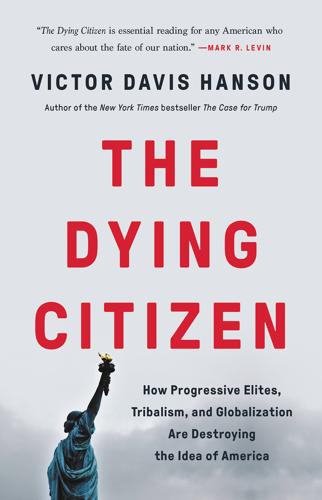
The Dying Citizen: How Progressive Elites, Tribalism, and Globalization Are Destroying the Idea of America
by
Victor Davis Hanson
Published 15 Nov 2021
Over a quarter of all California’s immigrants—who themselves constitute over one-quarter of the state’s current resident population—entered and remained in the state without legal sanction.36 Again, few of these outcomes affected the very wealthy classes that had supported the policies and laws leading to these crises and had the resources to ensure their consequences fell on others. The Bay Area, until recently a bastion of opposition to charter schools and school choice, witnessed an epidemic of expensive new and enlarged private academies as the per capita wealth of the rich soared. Meanwhile, the public schools increasingly enrolled the impoverished children of immigrants from Central America and Mexico.37 What did the beleaguered and shrinking middle class say in opposition to all of these state policies and socioeconomic trends?
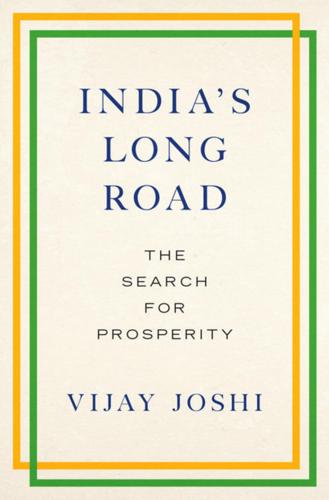
India's Long Road
by
Vijay Joshi
Published 21 Feb 2017
Sukhtankar (2014), ‘Payments Infrastructure and the Performance of Public Programs: Evidence from Bio-metric Smartcards in India’, NBER Working Paper No. 19999, National Bureau of Economic Research, Cambridge, MA. Muralidharan, K., and V. Sunderaraman (2013), ‘Contract Teachers: Experimental Evidence from India’, NBER Working Paper No. 19440, National Bureau of Economic Research, Cambridge, MA. References [ 331 ] 332 Muralidharan, K., and V. Sunderaraman (2014), ‘The Aggregate Effect of School Choice: Evidence from a Two-Stage Experiment in India’, NBER Working Paper No. 19441, National Bureau of Economic Research, Cambridge, MA. Nagaraj, R. (2013), ‘India’s Dream Run: Understanding the Boom and Its Aftermath’, Economic and Political Weekly, Vol. 48(20), 39–51. Nataraj, S. (2011), ‘The Impact of Trade Liberalization on Productivity: Evidence from India’s Formal and Informal Sectors’, Journal of International Economics, Vol. 85(2), 292–301.
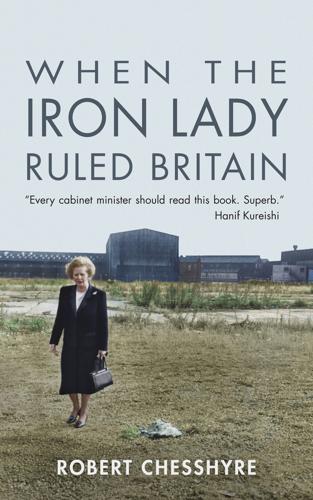
When the Iron Lady Ruled Britain
by
Robert Chesshyre
Published 15 Jan 2012
Further choice, as outlined in the 1987 Conservative manifesto proposal to allow schools to ‘opt out’ of local education authorities – giving mobility to the already mobile – would lead to greater polarization between the best and the worst in the schools. Those who could ‘work’ the system would do so, adding another tier of opting-out parents to the six per cent who now pay: the children of those who couldn’t exercise that ‘right’ would be more thoroughly segregated in sink schools. Choice, said Mrs Joan Sallis, the national organizer of the Campaign for the Advancement of State Education, means that he with the longest arm reaches the highest shelf. ‘It is a nice word for a nasty process.’ A few parents are candid enough to admit that choice is about advantage – the right school tie, influential friends, an acceptable accent – as well as about a decent education.
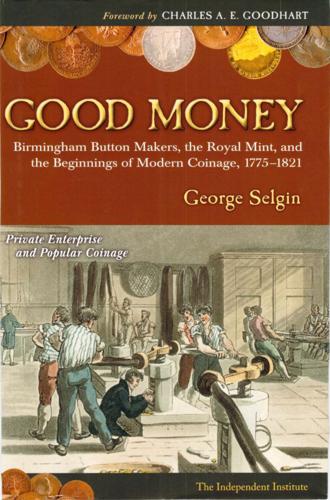
Good Money: Birmingham Button Makers, the Royal Mint, and the Beginnings of Modern Coinage, 1775-1821
by
George Anthony Selgin
Published 13 Jul 2008
Fred Singer JUDGE AND JURY: American Tort Law on Trial Eric Helland & Alex Tabarrok I LESSONS FROM THE POOR: Triumph of the Entrepreneurial Spirit I Ed. by Alvaro Vargas Llosa REGULATION AND THE REAGAN ERA: Politics, Bureaucracy and the Public Interest I Ed. by Roger Meiners & Bruce Yandle RESTORING FREE SPEECH AND LIBERTY ON CAMPUS I DonaldA. Downs RESURGENCE OF THE WARFARE STATE: The Crisis Since 9/11 I Robert Higgs RE-THINKING GREEN: Alternatives to Environmental Bureaucracy I Ed. by Robert Higgs & Carl P. Close SCHOOL CHOICES: True and False IJohn Merrifield STRANGE BREW: Alcohol and Government Monopoly Douglas Glen Whitman I STREET SMART: Competition, Entrepreneurship, and the Future of Roads I Ed. by Gabriel Roth TAXING CHOICE: The Predatory Politics of Fiscal Discrimination I Ed. by William F. Shughart, II TAXING ENERGY: Oil Severance Taxation and the Economy I Robert Deacon, Stephen DeCanio, H.
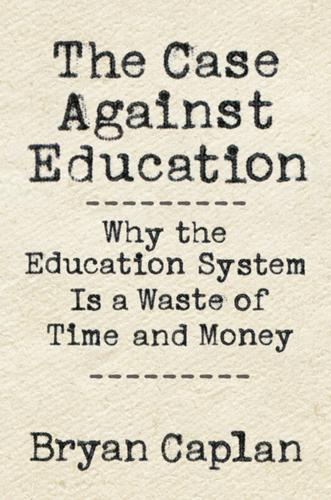
The Case Against Education: Why the Education System Is a Waste of Time and Money
by
Bryan Caplan
Published 16 Jan 2018
Schools—primary, secondary, and tertiary alike—should be funded solely by fees and private charity. Such policies (lack of policies?) are extreme even by libertarian standards. Most libertarians dream of a voucher system, where schools are private but funding is public.41 Yet to my mind, vouchers—and “school choice” more generally—only marginally improve over the status quo. Since education is mostly signaling, the chief problem is not low quality, but high quantity. America’s schools, like its sport stadiums, are white elephants. The main drawback of massive government backing isn’t that these white elephants are poorly managed or uncompetitive, but that they’re far too numerous and lavish.

Good Economics for Hard Times: Better Answers to Our Biggest Problems
by
Abhijit V. Banerjee
and
Esther Duflo
Published 12 Nov 2019
Milton Friedman Quotes, BrainyQuote.com, BrainyMedia Inc., 2019, accessed June 18, 2019, https://www.brainyquote.com/quotes/milton_friedman_412621. 15 Abhijit Banerjee, Rema Hanna, Jordan Kyle, Benjamin A. Olken, and Sudarno Sumarto, “Tangible Information and Citizen Empowerment: Identification Cards and Food Subsidy Programs in Indonesia,” Journal of Political Economy 126, no. 2 (2018). 16 Karthik Muralidharan and Venkatesh Sundararaman, “The Aggregate Effect of School Choice: Evidence from a Two-Stage Experiment in India,” Quarterly Journal of Economics 130, no. 3 (2015): 1011–66. 17 Luc Behaghel, Bruno Crépon, and Marc Gurgand, “Private and Public Provision of Counseling to Job Seekers: Evidence from a Large Controlled Experiment,” American Economic Journal: Applied Economics 6, no. 4 (2014): 142–74. 18 Mauricio Romero, Justin Sandefur and Wayne Sandholtz, “Outsourcing Service Delivery in a Fragile State: Experimental Evidence from Liberia,” working paper, ITAM, accessed June 18, 2019, https://www.dropbox.com/s/o82lfb6tdffedya/MainText.pdf?
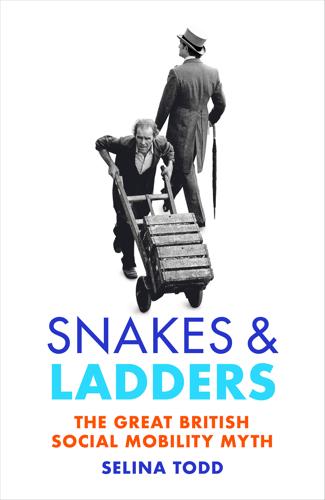
Snakes and Ladders: The Great British Social Mobility Myth
by
Selina Todd
Published 11 Feb 2021
By the mid-1990s, middle-class children were more likely to be educated in well-resourced schools, helped by covert school selection policies designed to attract children who were likely to perform well in examinations, and by parents’ ability to chauffeur their children to schools a long distance from home.15 Although successive governments presented these reforms as responding to public demand, many parents regretted the changes. A survey conducted in Scotland found that parents found choosing schools confusing and time-consuming. Most compared the situation unfavourably with the 1970s when local authorities had allocated children to a school.16 Researchers found that children in areas and in families where school choice was a matter of anxiety and concern picked up on these worries. They were particularly likely to see schooling as immensely important to their life chances.17 Among them was Lucy Young. Born in 1978, Lucy was the daughter of an upwardly mobile couple – her father was the print-worker-turned-computer technician who was able to buy the family’s council house in the 1980s.
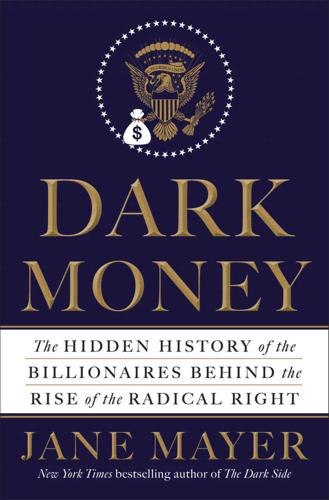
Dark Money: The Hidden History of the Billionaires Behind the Rise of the Radical Right
by
Jane Mayer
Published 19 Jan 2016
It paid for some six hundred graduate and postgraduate fellowships, right-wing think tanks, conservative journals, activists fighting Communism abroad, and its own publishing house, Encounter Books. Continuing the strategic emphasis on prestigious schools, the foundation gave both Harvard and Yale $5.5 million during its first decade under Joyce’s management. It was an activist force on the secondary-school level, too. The Bradley Foundation virtually drove the early national “school choice” movement, waging an all-out assault on teachers’ unions and traditional public schools. In an effort to “wean” Americans from government, the foundation militated for parents to be able to use public funds to send their children to private and parochial schools. When Joyce took over the Bradley Foundation, he continued to fund many of the same academic organizations he had at Olin, including half of the same colleges and universities.

A Generation of Sociopaths: How the Baby Boomers Betrayed America
by
Bruce Cannon Gibney
Published 7 Mar 2017
Much as Boomer economic neoliberalism provided a nothing-for-nothing “third way,” so educational neoliberalism would provide its own third way, to similar effect. The charge was led by Bill Bennett, the nation’s third secretary of education, appointed two years after ANAR came out. Rather than pursue ANAR’s recommendations, Bennett (a Boomer, naturally) and his successors held that the market would improve education, in the form of vouchers, school choice, charter schools, the federalist laboratory of the states in edifying competition with each other, and all the other neoliberal nostrums manufactured from the 1980s on and embraced by both parties. It was a risky bet, but then again, Bill Bennett, erstwhile educator and moral crusader, was nothing if not a risk taker, as his $8 million in gambling losses would subsequently reveal.15 However convenient it would be to dismiss Bennett as a Reaganite anomaly, the neoliberal experiment accelerated as Boomers gained power, under Democrats and Republicans, in states, blue, red, purple, and all the other dismal colors of the Boomer political rainbow, starting with charter school initiatives, passed in many cases by direct referendum—and thus not attributable to politicians alone.
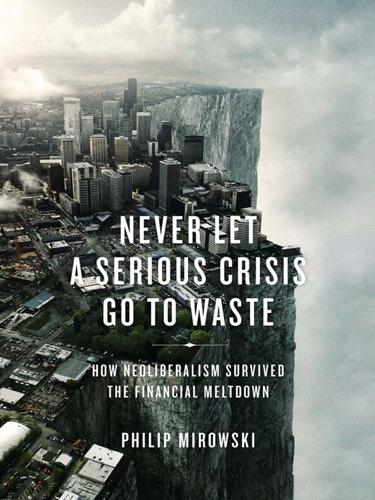
Never Let a Serious Crisis Go to Waste: How Neoliberalism Survived the Financial Meltdown
by
Philip Mirowski
Published 24 Jun 2013
You have to tailor your advice to what people want to hear, and then shade it in the direction of common sense.”156 In the same period, Cochrane pursued agnotology most directly by denying that his Cato-blessed position was ideologically right wing, or that it unsubtly served as a shill for the financial sector: “Milton Friedman stood for freedom, social, political, and economic. He realized that they are inextricably linked. If the government controls your job or your business, dissent is impossible. He championed economic freedom as much as a means to political freedom as for its own sake. He favored, among other things, legalizing drugs, school choice, and volunteer army. To call him or his political legacy ‘right wing’ is simply ignorant, and I mean that also as a technically accurate description rather than an insult.”157 Agnotology delights in preaching everything you thought you knew about politics was wrong. Cochrane, as already mentioned, went on to become president of the American Finance Association in 2010.
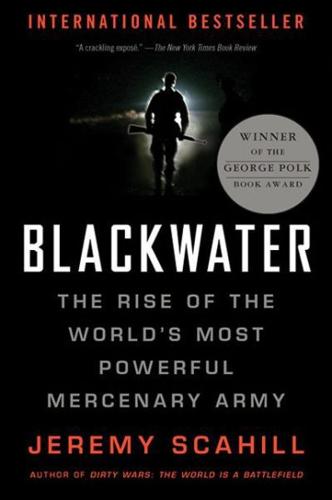
Blackwater: The Rise of the World's Most Powerful Mercenary Army
by
Jeremy Scahill
Published 1 Jan 2007
Since laypersons rather than pastors may run these groups, they may not have a high profile even in the church community outside the Family Forum network.”46 The MFF also established the Michigan Prayer Network, which consisted of “prayer warriors” assigned to nearly every legislator in the state.47 While the groups were prohibited from expressly lobbying, the effect of asking legislators to “pray” for issues like school choice and against gay rights made it, as one Michigan legislator put it, “just another lobbying gimmick.”48 While opening his wallet to the Christian right, Edgar Prince also became a patron to the entire community of Holland, investing millions of dollars into Hope College, founded by Albert Van Raalte, and its equally devout rival Calvin College, Edgar’s wife’s alma mater.49 He and Elsa almost single-handedly reengineered and brought a boom to Holland’s downtown, saving it from the fate hundreds of other small towns had suffered throughout the Midwest as they gradually slipped into economic oblivion due to poor urban planning coupled with outsourcing, downsizing, layoffs, and the overall decline of U.S. manufacturing.
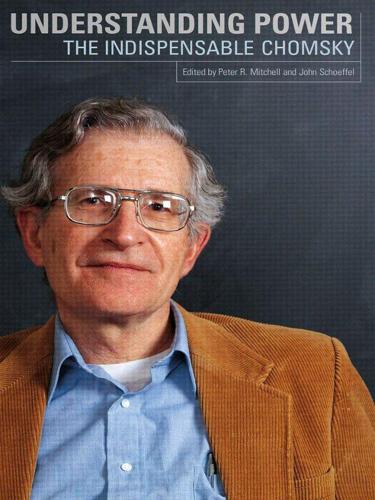
Understanding Power
by
Noam Chomsky
Published 26 Jul 2010
Inner-City Schools WOMAN: Noam, a number of activists I know are on welfare, and their children are going to public schools that increasingly are resembling prisons: there are armed guards in the halls, there’s a high level of violence. And I know some of these kids, they’re really brutalized—if they’re not chronically depressed, then they’re violent: violent in language, violent in fact. One of the mothers recently told me—and she’s a pretty radical person—that the conservative “School Choice Movement” [whereby the state would subsidize tuition at private institutions instead of administering public schools] really is appealing to her. It surprised me, but she said, “The left isn’t addressing the problem of the schools, the left is sentimental about public education.” I’m wondering what you think about that?

The Meritocracy Trap: How America's Foundational Myth Feeds Inequality, Dismantles the Middle Class, and Devours the Elite
by
Daniel Markovits
Published 14 Sep 2019
For the purposes of this study, private schools included parochial schools, and data came from the Educational Longitudinal Study of 2002 Senior Class of 2004 First Follow-Up survey, National Center for Education Statistics. only 7 percent from the bottom half: For a compilation of these data, see Michael T. Owyang and E. Katarina Vermann, “Measuring the Effect of School Choice on Economic Outcomes,” Regional Economist, Federal Reserve Bank of St. Louis (October 2012). The study bases its calculations on data from the National Center for Education Statistics. from the top 4 percent of the income distribution: Ruben A. Gaztambide-Fernandez, The Best of the Best: Becoming Elite at an American Boarding School (Cambridge, MA: Harvard University Press, 2009), 35.

The Rise and Fall of American Growth: The U.S. Standard of Living Since the Civil War (The Princeton Economic History of the Western World)
by
Robert J. Gordon
Published 12 Jan 2016
Effective preschool education is devoted not only to vocabulary and other learning skills, but also to “character skills such as attentiveness, impulse control, persistence and teamwork.” 12 Secondary and Higher Education Preschool comes first, because each level of disappointing performance in the American educational system, from poor outcomes on international PISA tests administered to 15-year-olds to remedial classes in community colleges, reflects the cascade of underachievement that children carry with them from one grade to the next. No panacea has emerged in the form of school choice and charter schools, although there has been much experimentation—with some notable successes in which children from low-income backgrounds have earned high school diplomas and gone on to college.13 An important component of the inequality and education headwinds is the U.S. system of financing elementary and secondary education by local property taxes, leading to the contrast between lavish facilities in rich suburbs which coexist with run-down, often outmoded schools in the poor areas of central cities.